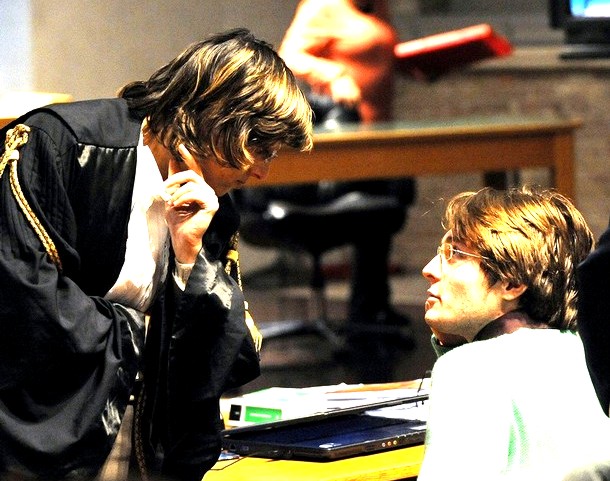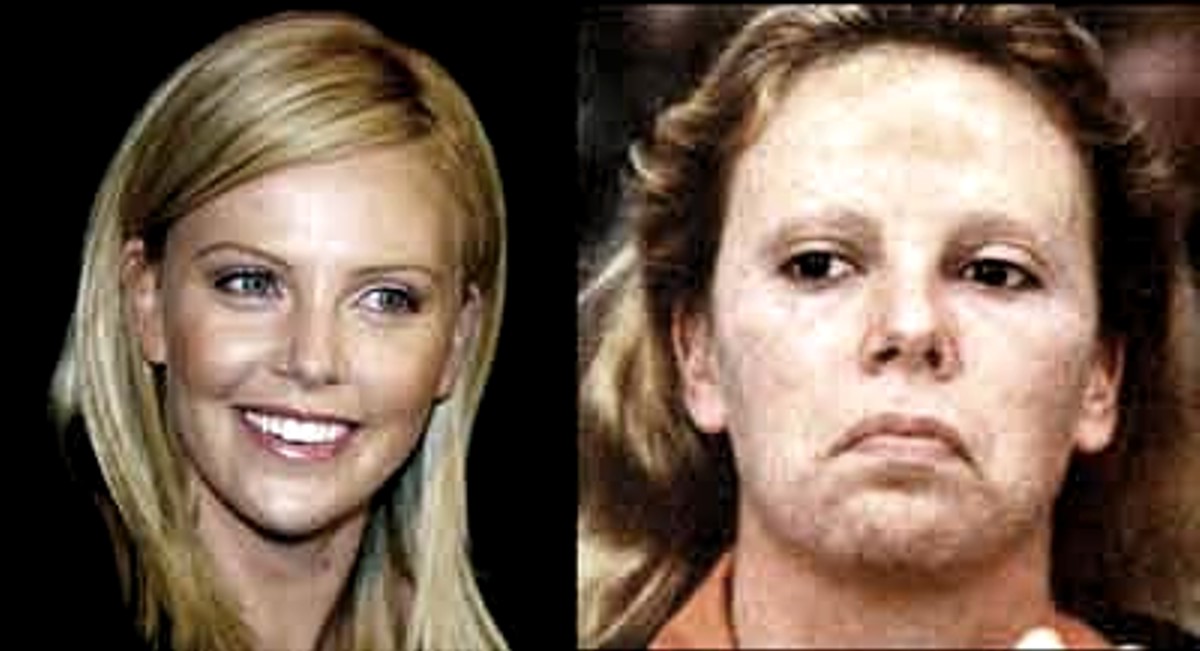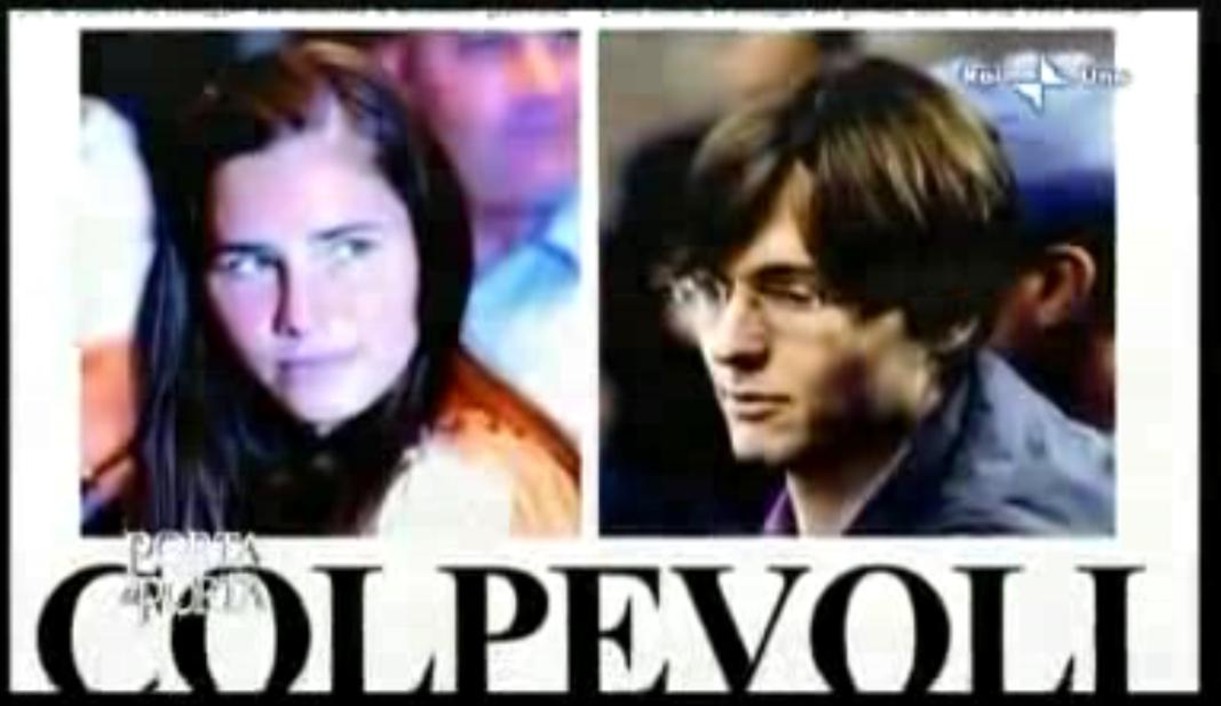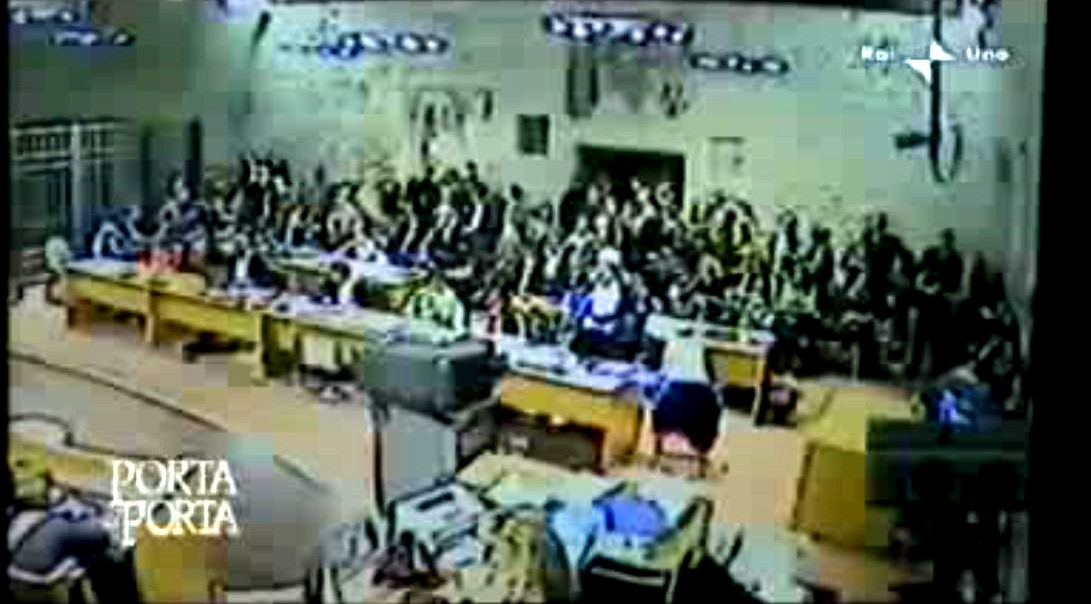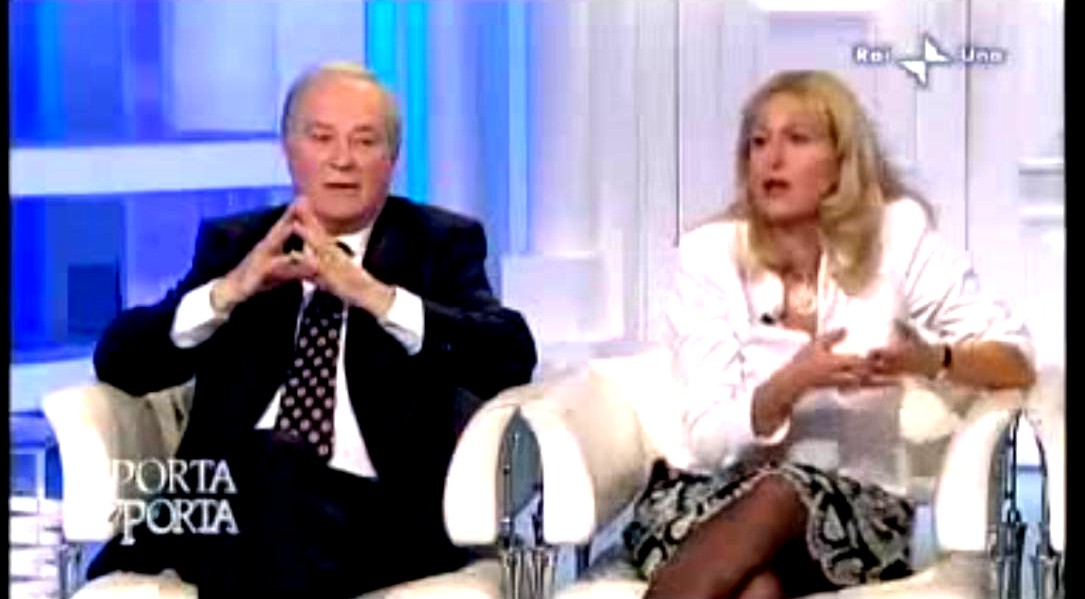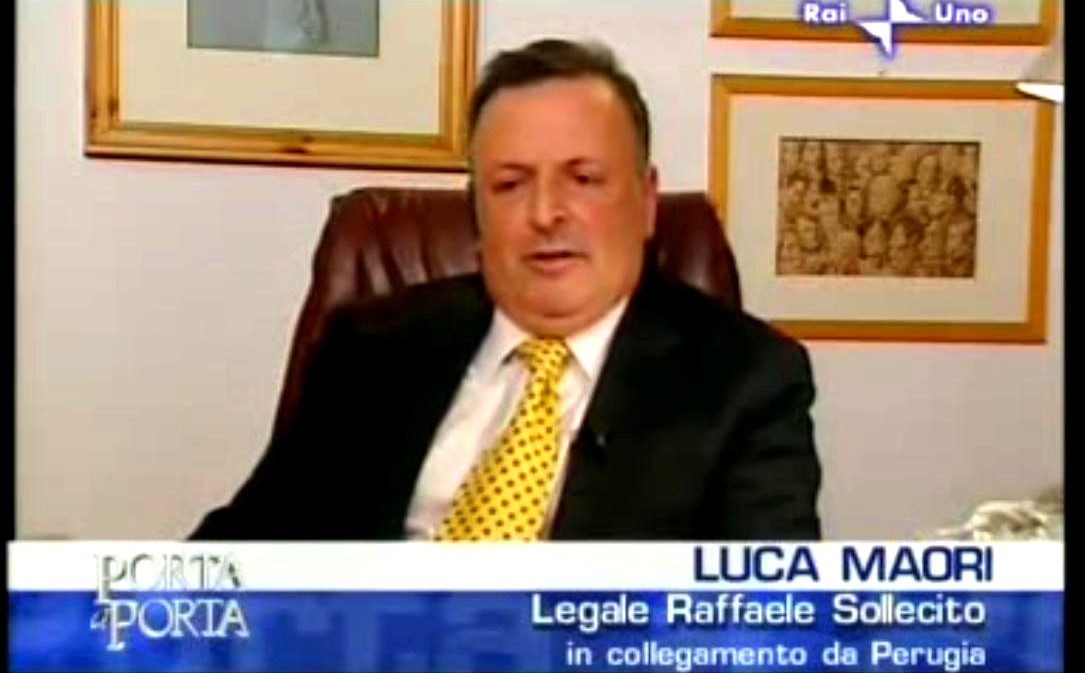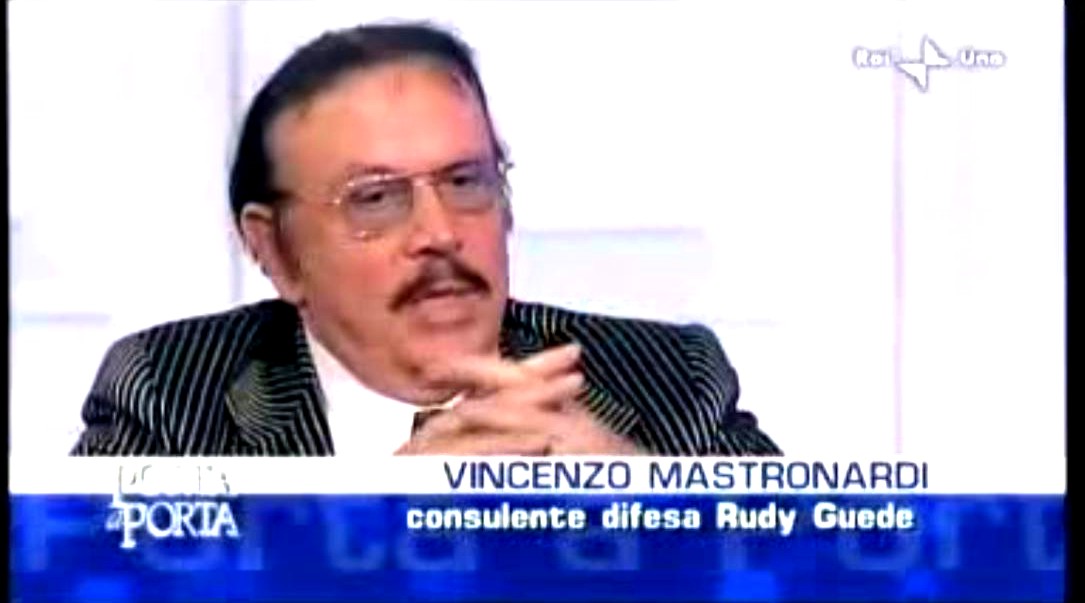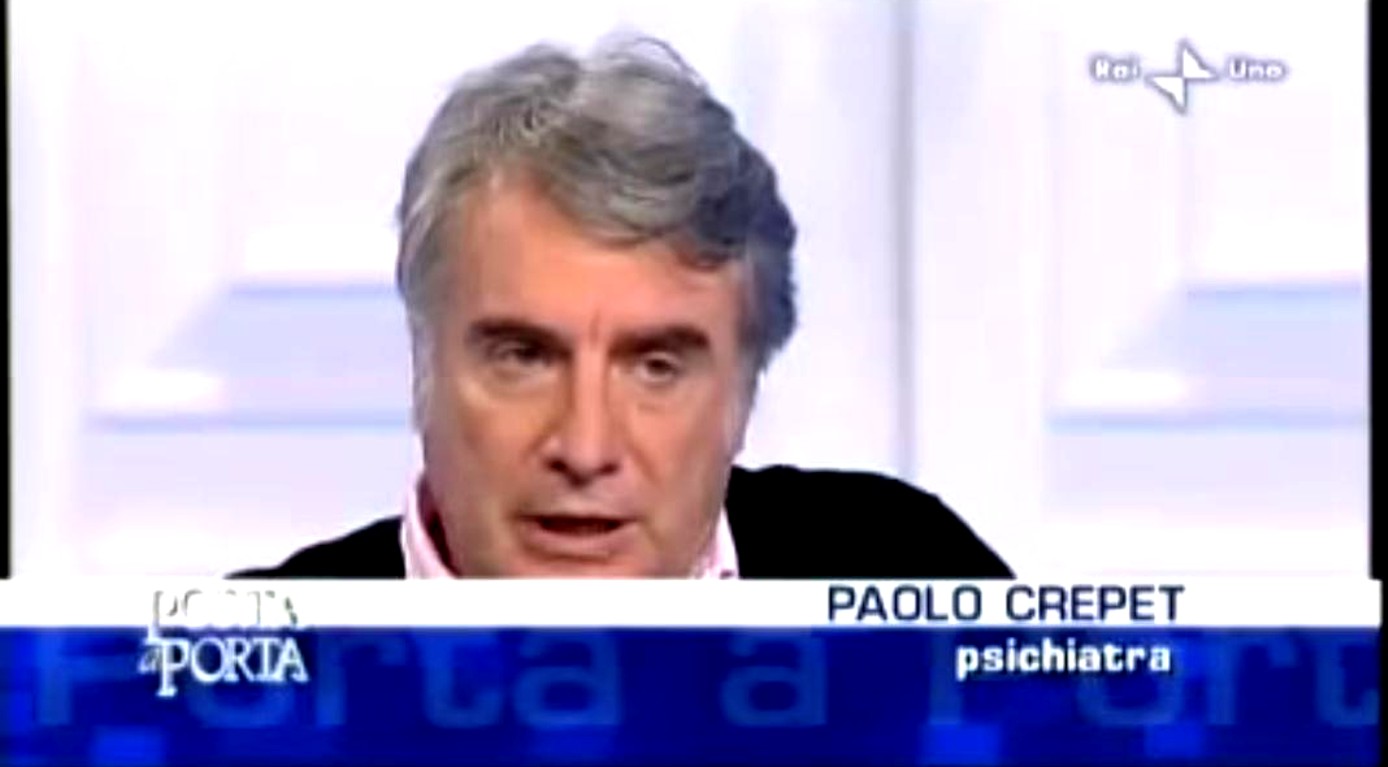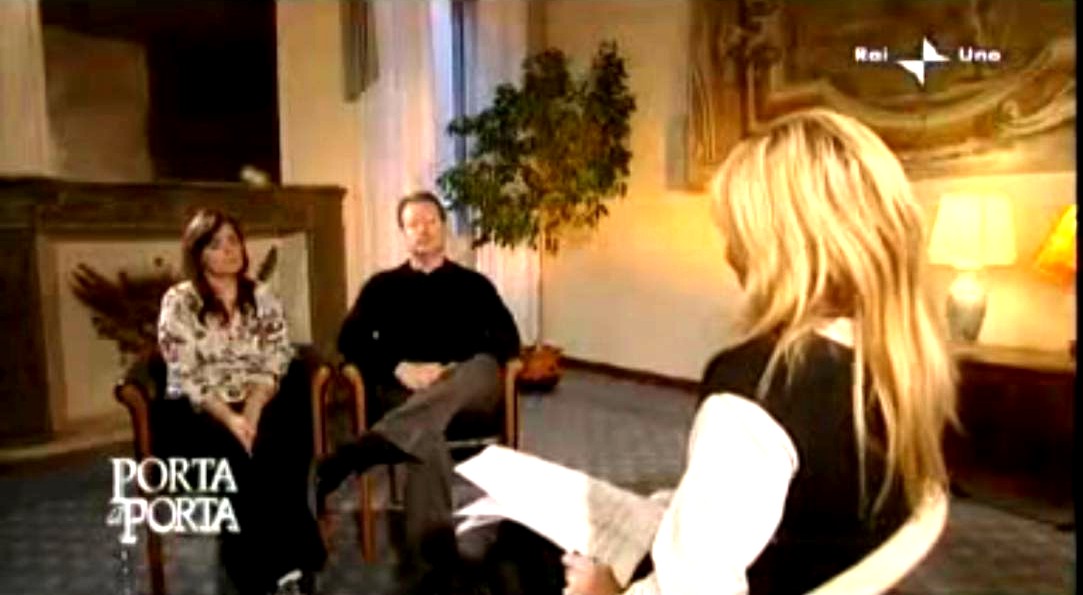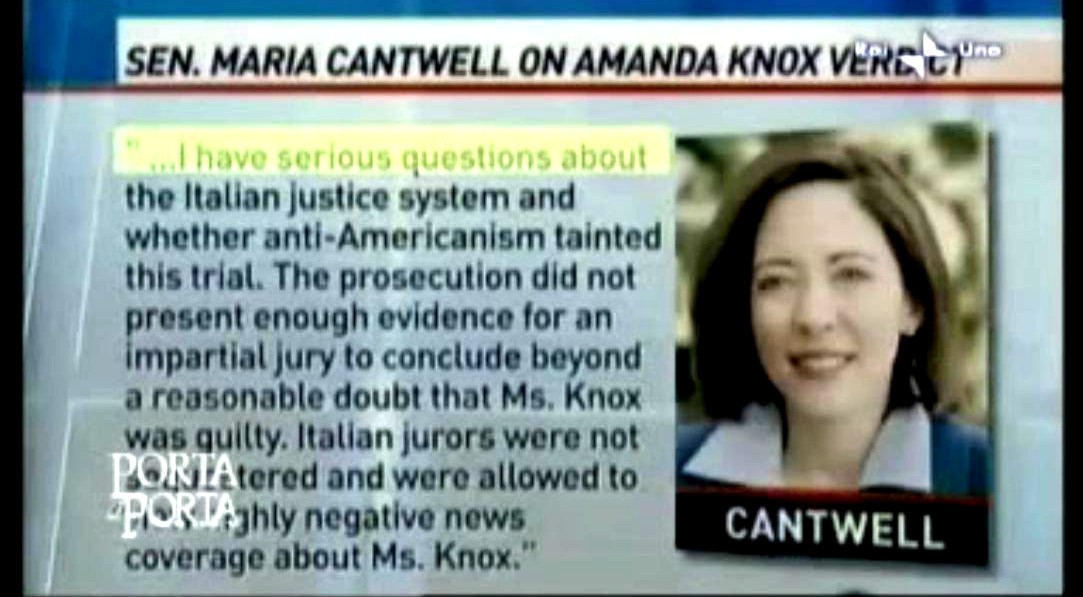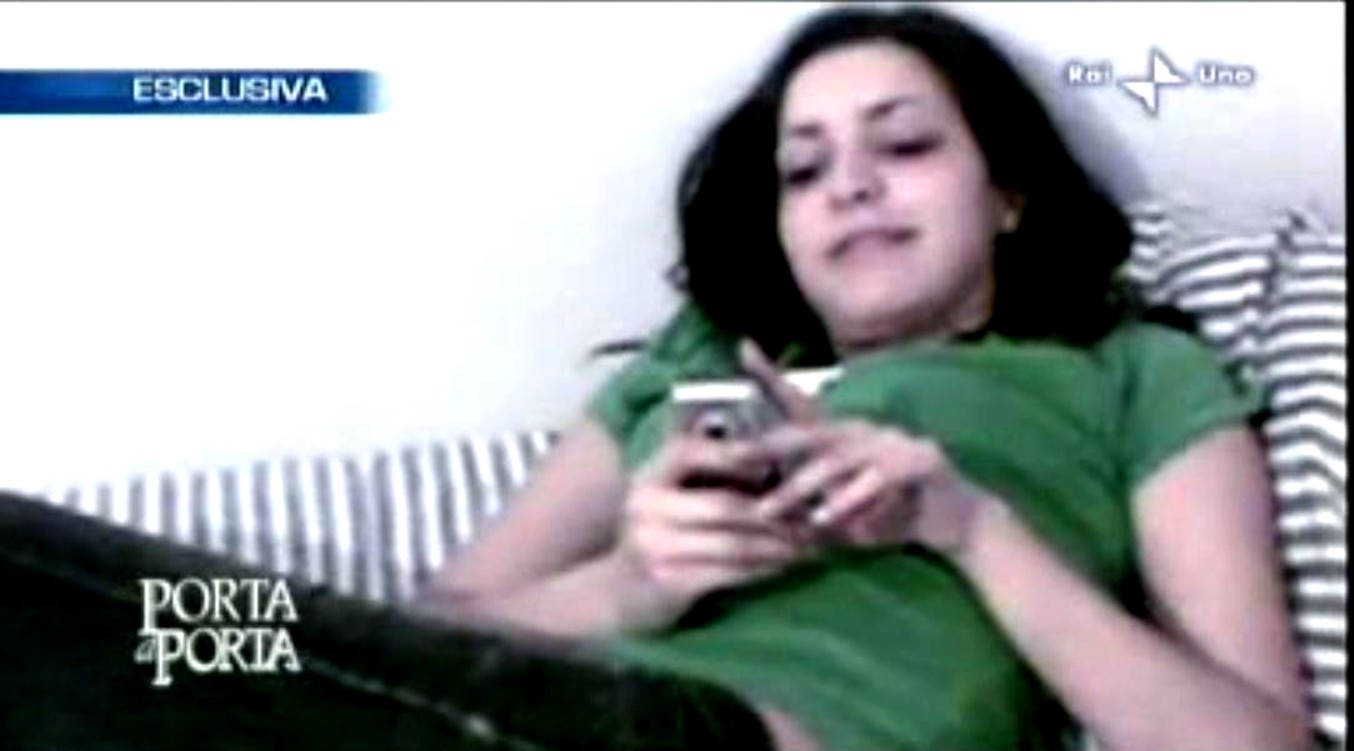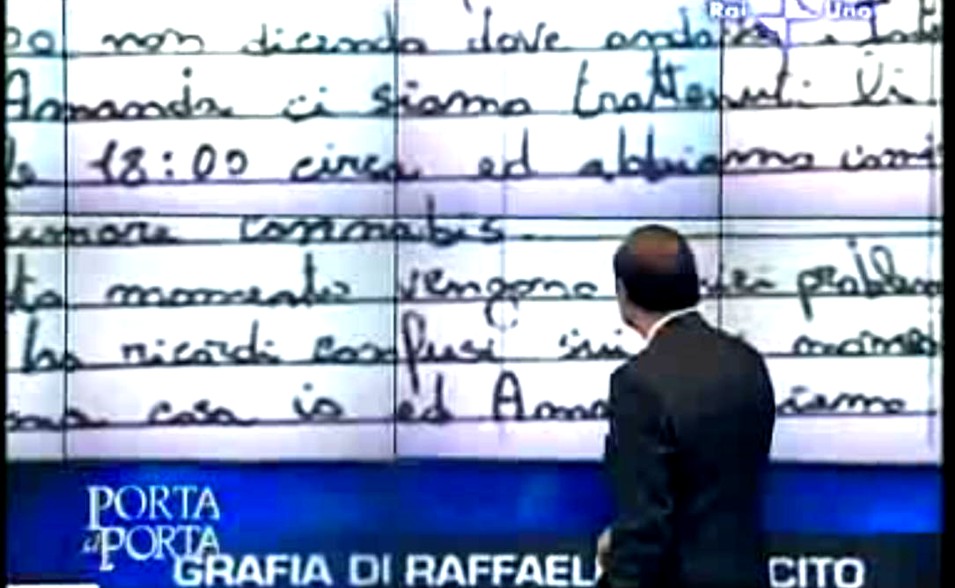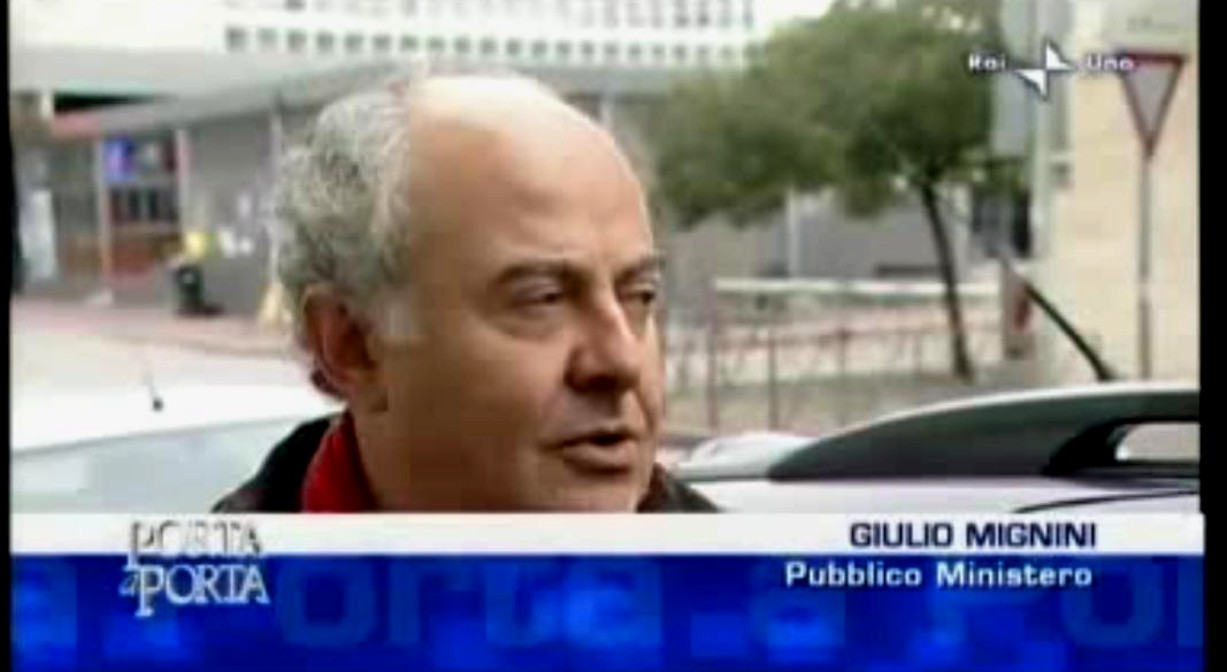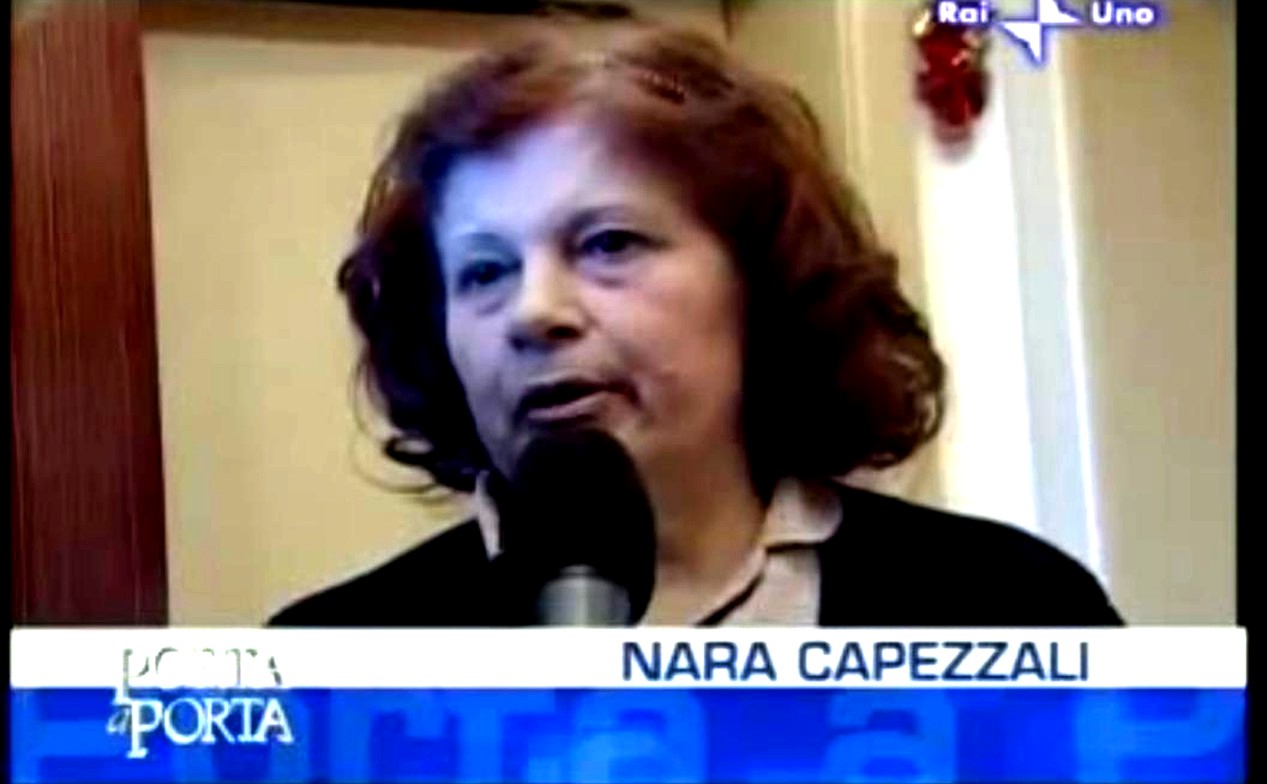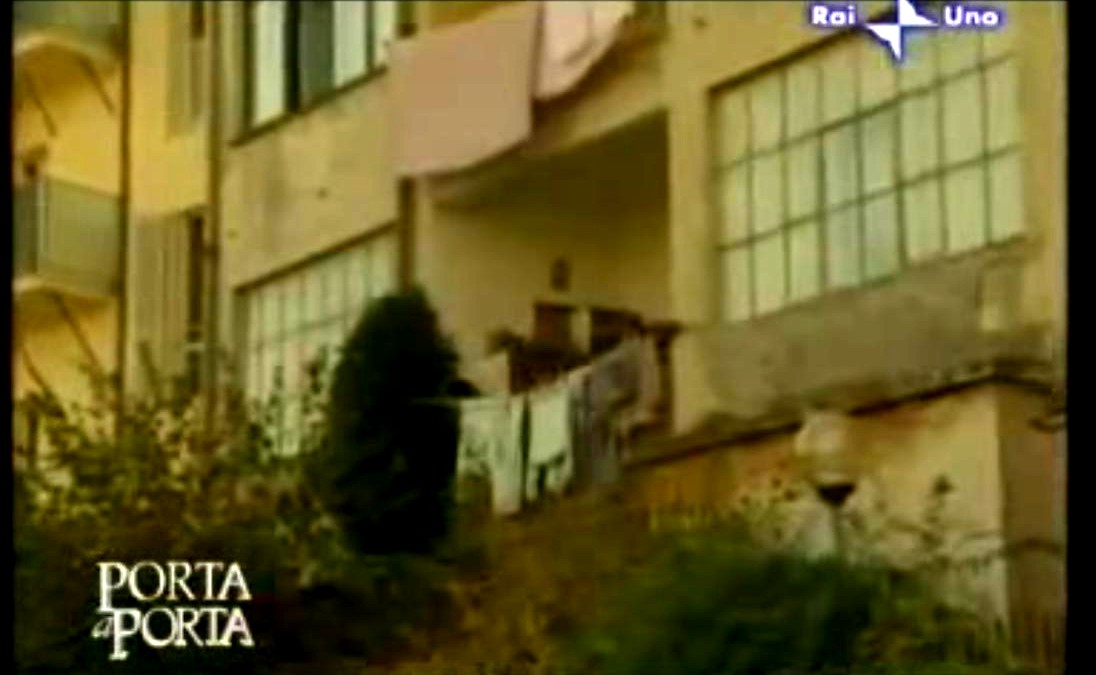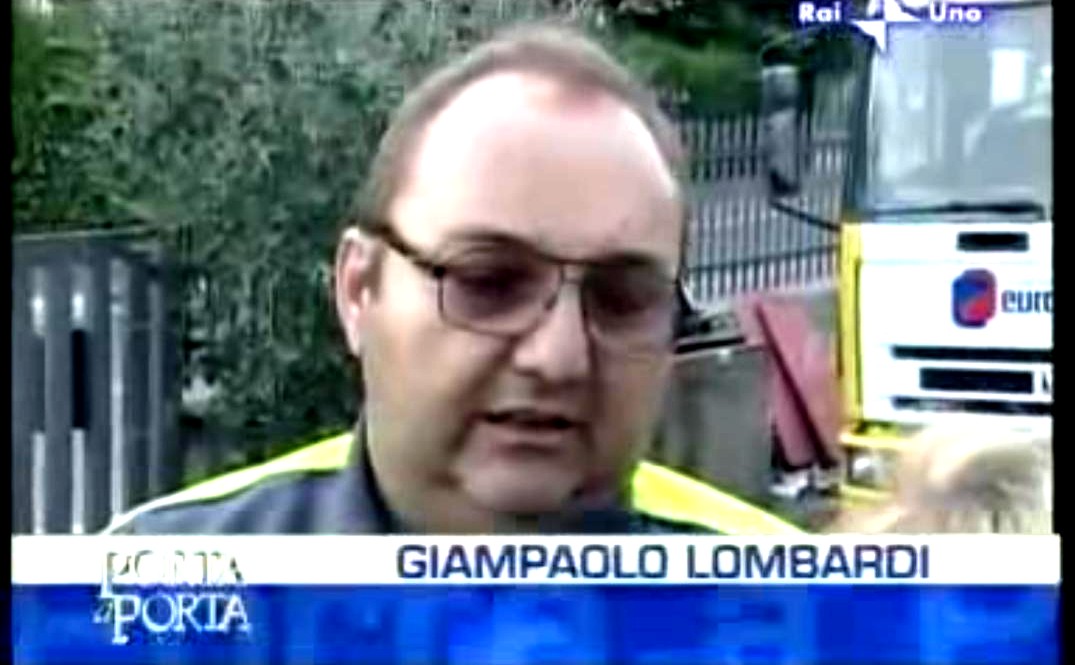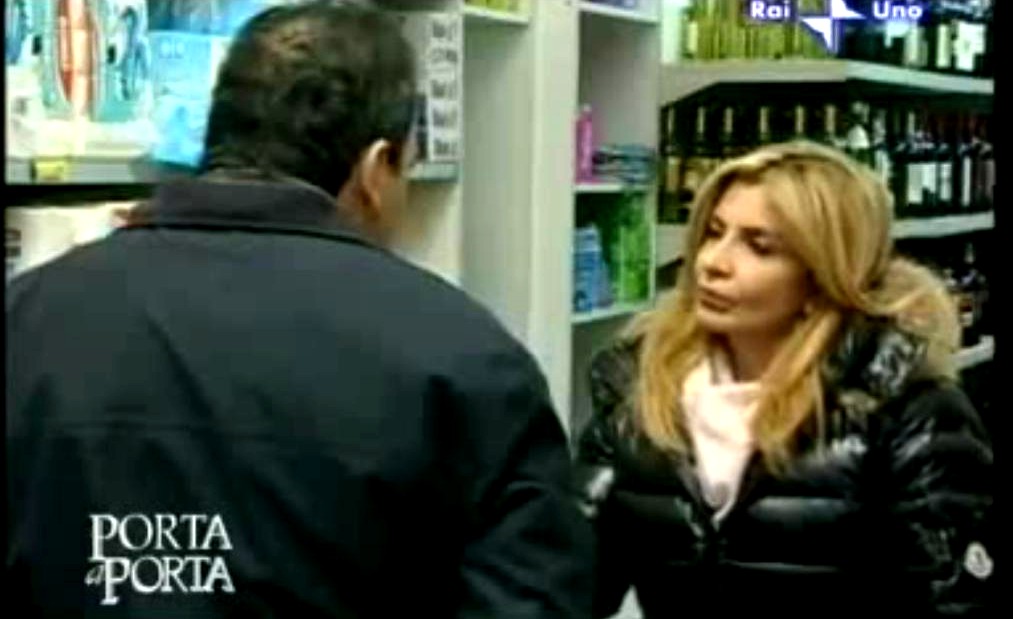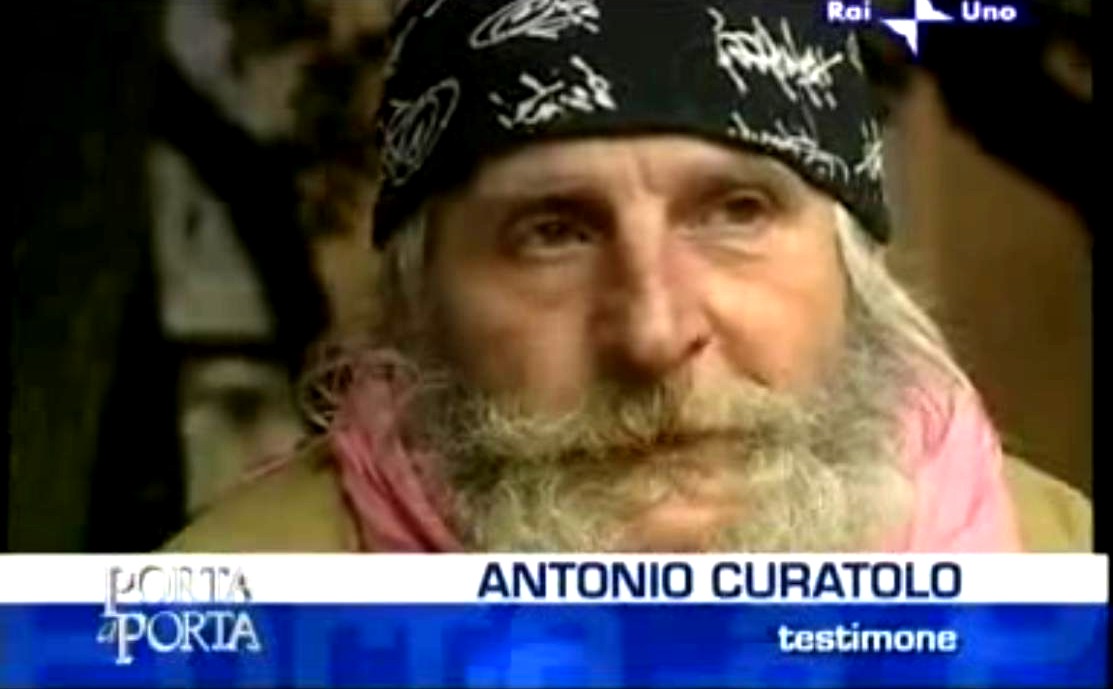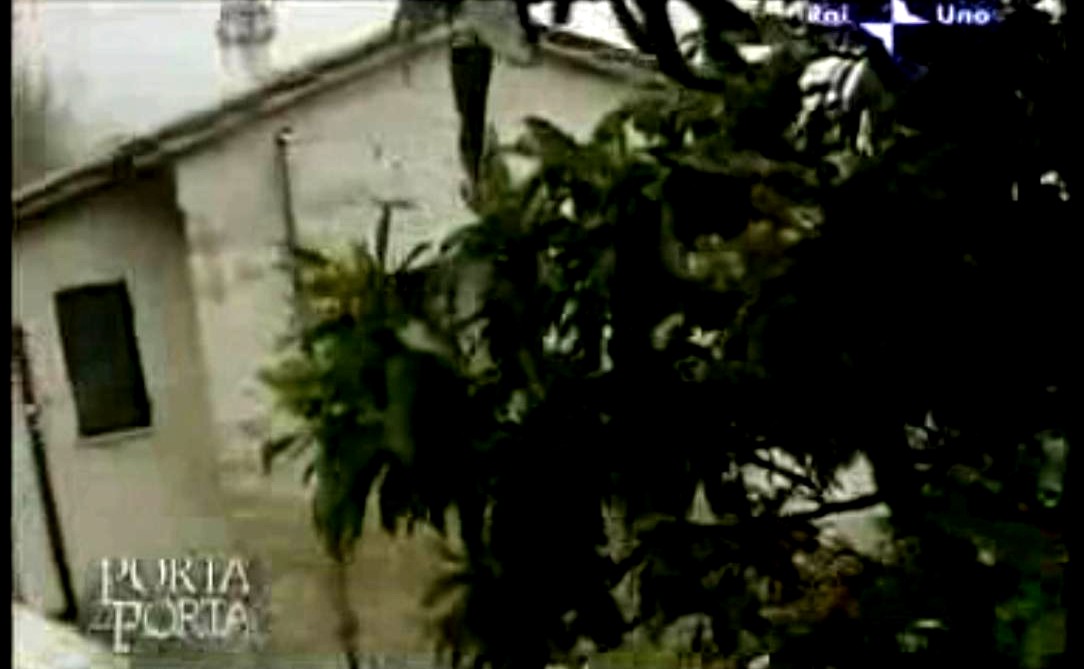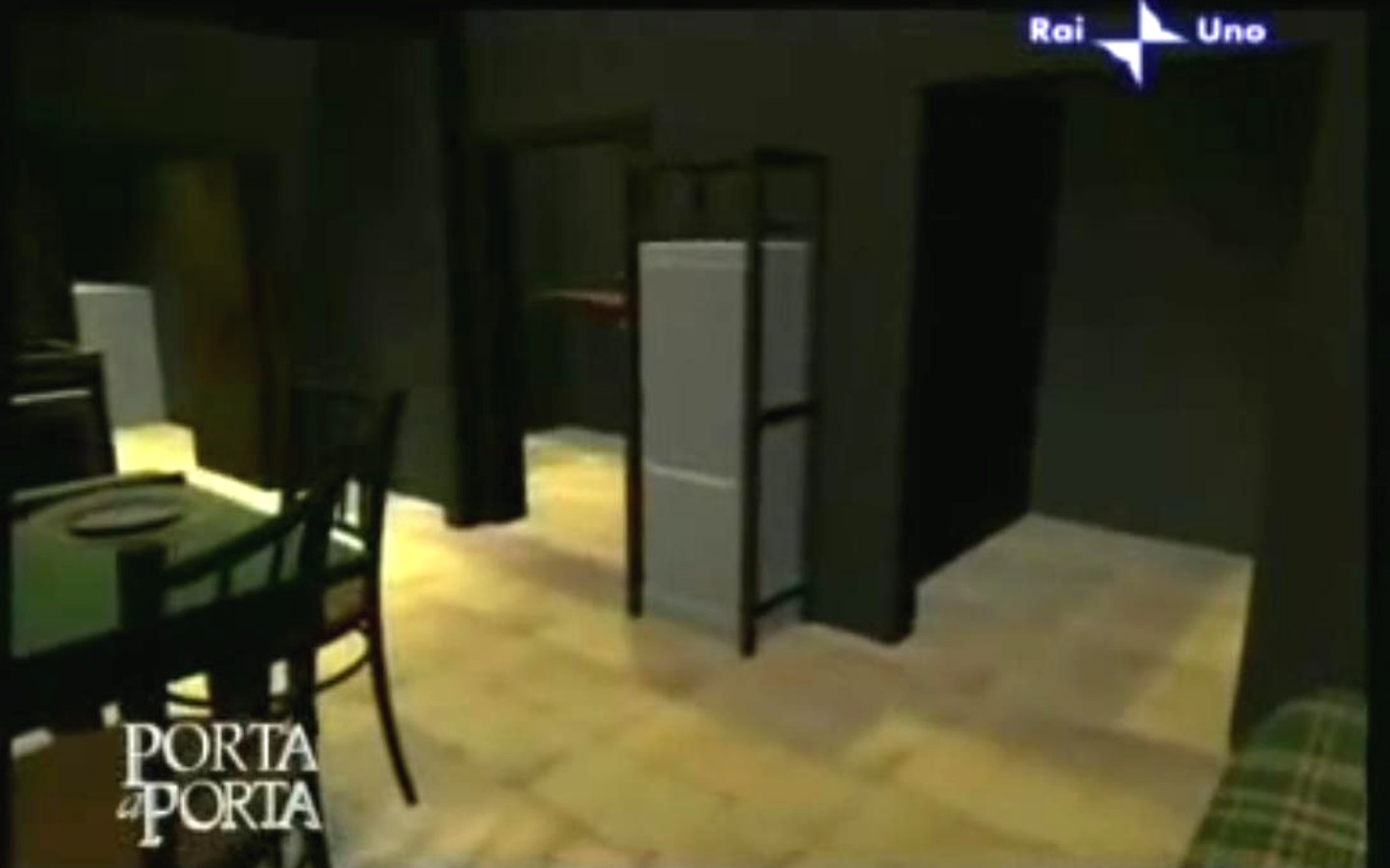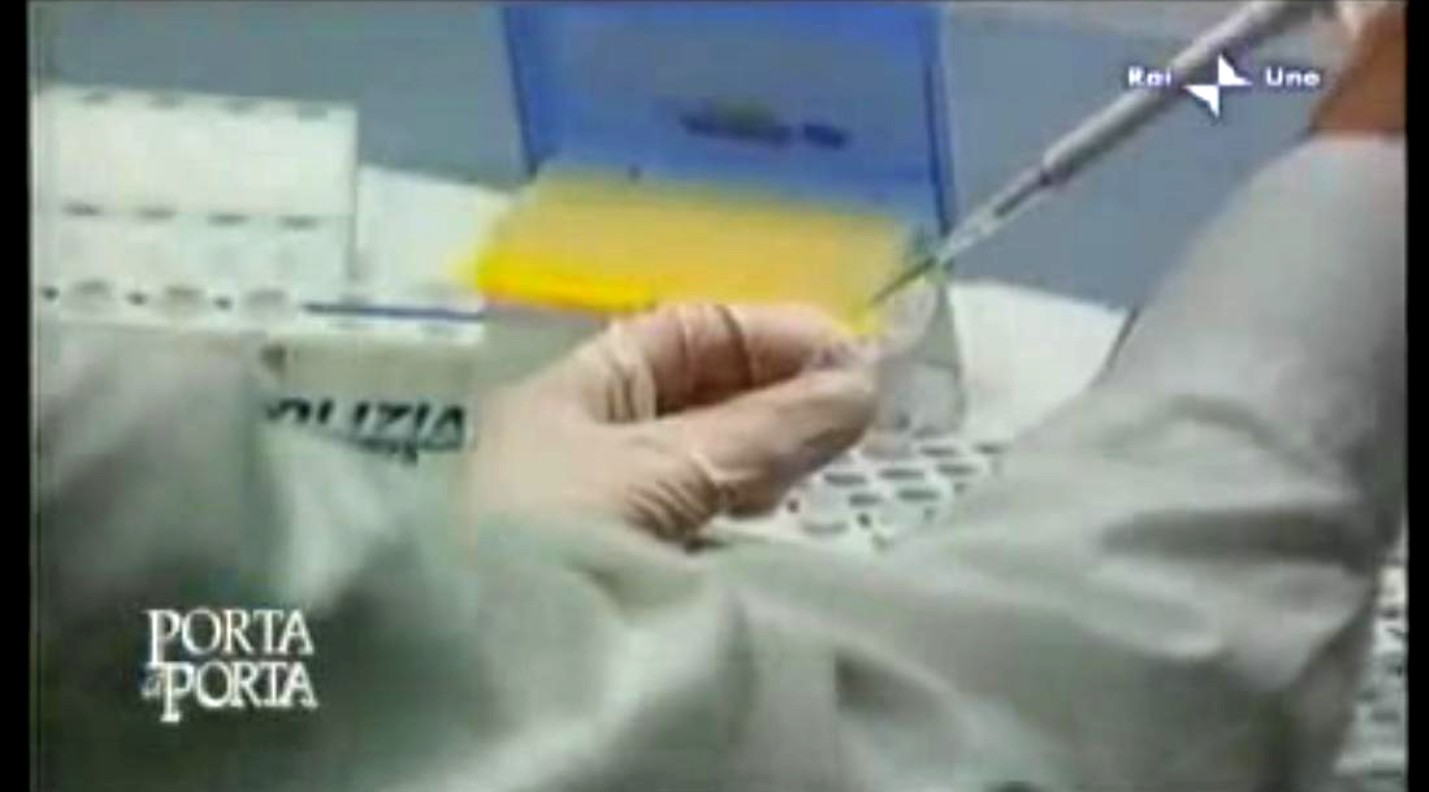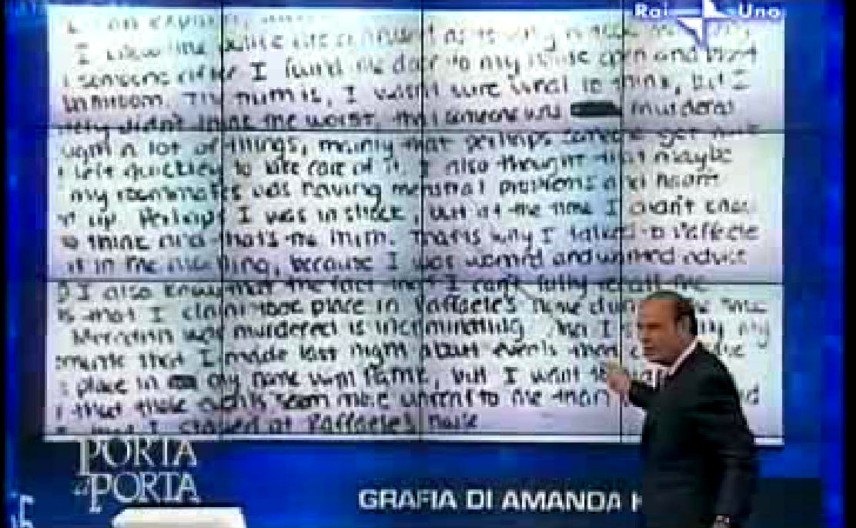
Category: News media & movies
Friday, September 24, 2010
The Knox Movie: Sollecito Reported Angry - Real Risk That His Defense Could Break Away From Knox’s
Posted by Peter Quennell
The Austrian Independent is reporting that Raffaele Sollecito has come out against the Lifetime movie.
Now Raffaele Sollecito ““ jailed for 25 years for his part in the crime which occurred in Perugia three years ago ““ announced concerns the film could harm legal appeals he and Knox, his ex- girlfriend are making against their convictions.
The Italian’s lawyer Luca Maori said today (Fri): “We don’t have the final verdict in this case yet. If the film is ready before the appeal is over, we will seek a court injunction to prevent it being aired.”
Sollecito’s lawyers Giulia Bongiorno and Luca Maori have already said they will go so far as to take Lifetime to court to prevent the making and release of The Amanda Knox Story movie during the appeals - which could go on for years.
Why are Raffaele Sollecito and his lawyers being so angry and so adamant about canning the movie?
Here are two suggestions.
1) The hurtful PR campaign, of which this movie must seem an extension
It has been obvious for a long time in Italy that the Sollecito camp (especially including Raffaele’s father) do NOT like being joined at the hip to what must look to them like a runaway train of a defense campaign.
Barbie Nadeau in Newsweek last week described how very badly the strident and misleading PR campaign is now going over in Italy.
Since her arrest in November 2007 and conviction in December 2009, Knox supporters have repeatedly condemned everyone involved in the case who does not believe in wholeheartedly in her innocence. Knox’s stepfather, Chris Mellas, ridiculed the ruling judge’s conviction reasoning as a “fictional novel” and a support group called Friends of Amanda regularly called the chief prosecutor “mentally unstable” throughout the trial.
In the wake of the verdict last December, Sen. Maria Cantwell of Washington (Knox’s home state) promised to get Secretary of State Hillary Clinton to extradite the young American home from Italy (Clinton has said she will not intervene), and Donald Trump has even boycotted Italy and its products.
Amazingly, even the deeply respected Massei Report is coming in for ridicule. Raffaele Sollecito and all of his family and team being of course Italian, this very strident anti-Italianism (actually much disliked by the State Department) is severely hurting Sollecito and his family in the public eye in Italy.
All of this is made worse by the fact that Sollecito’s lead lawyer, Giulia Bongiorno, is a prominent member of the Italian Parliament, and she has her own image and popularity to worry about. Last year, halfway through the trial, it looked like she was getting ready to walk.
2) Possible separating legal strategies from the first appeal in November onward
The movie could paint Sollecito in a bad light or misrepresent him in some way that could really hurt his chances at appeal.
.
Remember Sollecito separated himself from Amanda Knox in all of his alibis after his first alibi. He STILL has it that she was out of the apartment on the night for four hours while he was on the computer and so on at home.
We believe Sollecito is pretty solidly tied to the crime in the Massei Sentencing Report.
But he had less motive than Knox - he barely knew Meredith - and he could now come to claim that he was only drawn in by Knox during the clean-up. The claim could be that only Guede and Knox killed Meredith, and he was not present in the house at that point.
This difference between Knox and Sollecito is a minefield for any film makers. Slander and libel suits might really fly if they seem to get it wrong - and not least of course from Prosecutor Giuliano Mignini if he is misrepresented.
*************
In other developments and non-developments, there is still no word from Seattle - from the Knox family or her supporters or the Seattle media - on whether Amanda Knox’s family had a role in creating this movie.
Even if the Seattle media sit on their hands on this one (so what’s new?!) Curt Knox and Edda Mellas will be heading for Perugia soon, for Amanda Knox’s slander trial and for their own, and will presumably be asked all about it.
Not least, of course, by Amanda’s own lawyers.
Thursday, September 23, 2010
Entertainment Industry Buzz That Curt Knox And Edda Mellas Might Be Connected To Distasteful Movie
Posted by Peter Quennell

[joint images of Panetierre and Knox posted yesterday by Huffington Post]
We’ve heard buzz from a couple of sources in NYC that Amanda Knox’s parents might have had a hand in this Lifetime movie of Amanda Knox which is being raced into production.
One remarked that it was “informed speculation” and that some proof could be on its way to leaking out. Reports like this below in the Chicago Sun-Times that Hayden Panettiere has already visited Amanda Knox in Capanne Prison help to fuel the speculation. It seems very unlikely that she would have gained such access, if she did, without Knox’s parents assisting.
Former “Heroes’’ star Hayden Panettiere has visited Amanda Knox in prison in Italy - part of her preparation to play Knox in a TV movie.
Also fueling the speculation is the deafening silence of Amanda Knox’s family and friends in Seattle, in the face of the various Perugia lawyers’ very strong protests about the movie (see the post below) which we presume was genuine, and not simply blowing smoke in an orchestrated sort of way.
One problem with any movie that Curt Knox and Edda Mellas do not tightly control is the reports that are already out there (including in two of the books) of extreme family friction before and after the divorce - Amanda was not much more than a toddler at the time of the divorce.
Narcissistic sociopathy and narcissistic psychopathy, which psychologists have speculated Amanda might to some degree have (tests done on her in prison during the hearings were not released. but they helped sway a judge to not grant house arrest or bail), can apparently be triggered by early childhood trauma.
Another problem for Curt Knox and Edda Mellas if they do not control the film is the reports of Amanda’s quirky behavior over the years, which continued at the University of Washington and also in Perugia. It was most especially noticeable in the three days after Meredith’s murder, as her sentencing report points out, and again when she was on the witness stand in June 2009. And she has admitted to using drugs - in fact, she used that as a part of her defence.
And another problem is the sheer depraved cruelty of the crime, chillingly described in the Micheli and Massei Reports.
Filming is now said to start next month, although the point of that is not obvious if it is not to be aired before the second appeal, as the Perugia defence lawyers have said they will insist on. On how long that second appeal might take, our poster Cesare Beccaria points out that it could drag on for years.
Appeals should be faster, but not necessarily. In Italy the problem would be in Cassazione (3rd instance on law) where they can send the trial back to appeal for even a small procedural error. The case could go back and forth from appeal to Cassazione for years. Only Cassazione can confirm the verdict.
Media reports on the movie have all seemed to us pretty cool toward it. They have included phrases such as “all 3 convicted for murder, sexual assault, and obstructing justice”, “killer”, “convicted murderer” and so on. Only one used the inaccurate term “accused”.
Comments posted under online reports on the movie seem to have been very strongly pro-Meredith and her family, after the compelling outcry from her mother in London, and often strongly anti Amanda Knox, who seems to command almost no online sympathy or support any more.
None of Hayden Panettiere’s fans seem too thrilled. .In fact nobody who is a friend or fan of Hayden Panettiere seems to be speaking up to say this is a great career move for her, and at least some think she is being used - being duped - to misleadingly influence public opinion and maybe the court.
Finally, here is part of the description in Wikipedia of Lifetime Television which is certainly one of the most controversial cable TV channels in the United States for its incessant focus on one or other victim - which, in the case of the present film, may very well NOT be portrayed as poor Meredith.
Because of the obvious feminine slant to the network’s programming, Lifetime is often jokingly referred to as The Estrogen Channel, or “Wifetime” and many criticize the network’s over-reliance on formulaic made for TV movies, including the “women in jeopardy” or “woman scorned” theme common on films produced by the network, archived product which aired on the major networks in the 1980s and 1990s, and outside producers airing their work on the network.
Other comedy programs have satirized Lifetime’s sometimes sentimental programming. Family Guy once parodied their slogan, making it Lifetime: Television for Idiots, and in an episode had one of the main characters make a Lifetime-like film which oversimplified those themes, along with a film starring Valerie Bertinelli, called “Men are Terrible and Will Hurt You Because This is Lifetime”.
On August 27, 2009, A&E Television Networks, the owner of A&E Network, History and others, acquired Lifetime Entertainment Services. Though the channel is owned by another subsidiary company operated as a joint venture, Lifetime and its networks remain under the co-ownership of The Walt Disney Company and Hearst Corporation, though NBC Universal became partial owner of the Lifetime channels as well since NBCU already was a part owner of A&E Television Networks.
This movie REALLY should have been about the real victim Meredith, as her mother compellingly complained. THAT is normal Lifetime territory, not doing special pleading for her convicted killer. Hayden and writer Wendy Battles, please read up about Meredith, and see if you still feel the same way.
Read this post for example about what a super-high-achiever Meredith really was, and what a huge loss to the world her death is. And read the Massei Sentencing Report (link at top here) on how very, very cruel and depraved this crime against her really was.
[Below, second from left, is said to be Lifetime scriptwriter Wendy Battles]
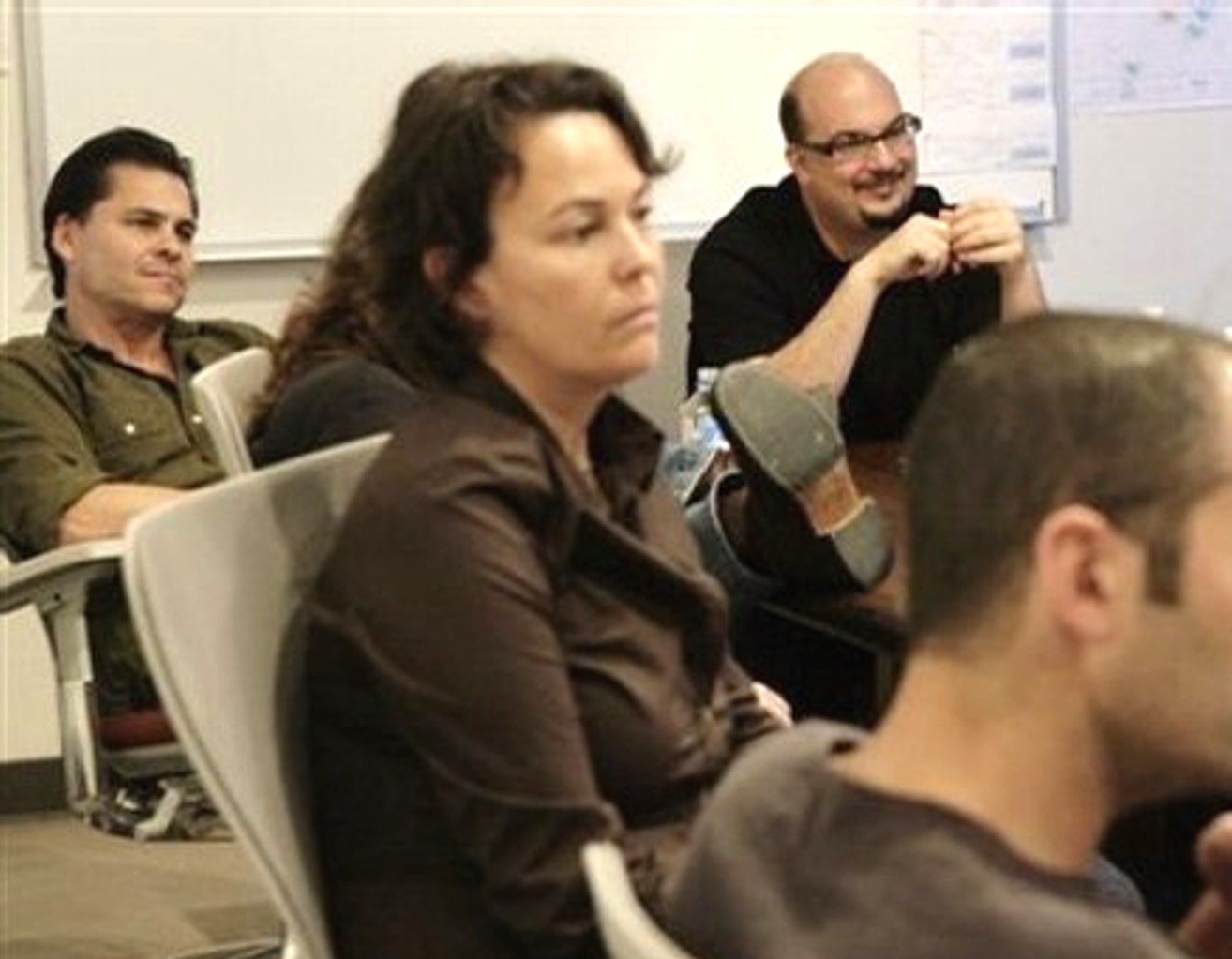
Tuesday, September 21, 2010
Could Movie Depicting The Real Knox And The Real Meredith Be A PR And Defense Disaster?
Posted by Peter Quennell
Already one movie is in the works. That one will be based on Barbie Nadeau’s excellent little book Angel Face: The True Story of Student Killer Amanda Knox
That British movie is likely to stay pretty close to the truth, Meredith as the real angel, and Amanda as at least in some degree the scary opposite. Barbie Nadeau seems to be in no doubt that Amanda was fairly convicted, but she also seems to think maybe there were factors going back to Amanda’s childhood (as did Paul Russell and Graham Johnson in Darkness Descending) that could have kinda set Amanda up, and could have been prevented by parents who cared.
Now we have this new made-for-TV movie (post below) by the Lifetime cable channel (with Oxygen, it has the largest ratio of women viewers) which for now at least is starring the popular actress Hayden Panettiere.
In 2003 the beautiful South African actress Charlize Theron (images above) who had previously played super-cool and super-sexy roles, played the Florida serial killer Aileen Wuomos in the movie Monster. If anything, Charlize Theron played Aileen Wuomos as more scary than she really was - and Charlize Theron won an Oscar for the portrayal.
Kathy Bates, Russell Crowe and Nicole Kidman also did very well playing roles strongly against type, along with quite a few others. An actor’s dream, to pull this one off.
Could Lifetime and Hayden Panettiere now have in mind a movie rather like Monster? Playing Amanda Knox as she really seems to be - only more-so?
This has already struck the Knox and Sollecito defense teams as not only possible but a real danger. One that could influence her first appeal late this November, and help to sink her second appeal late in 2011.
From today’s Italian Libero News website.
Lawyers for Amanda Knox and Rafael Sollecito announce a battle with the script of a film for television on the personal life and trial of the two young adults convicted in the first degree for the murder of Meredith Kercher.
Maria Del Grosso, a lawyer who works with the criminal lawyers Amanda Luciano Ghirga and Carlo Dalla Vedova, reached by telephone by Adnkronos, called the idea “at least inappropriate…. you can not think about making a film when the case is judicially still open…. when you remove all this tension, we can work better on the appeals.”
The same opinion was expressed by Luca Maori, Sollecito Raffaele’s defender with Ms Giulia Bongiorno, who said to AGI “I am absolutely opposed to a movie when the appeal process, expected to be long, has not yet even started.”
“It is unthinkable” added Giulia Bongiorno “to make a film when there is still an open case uncrystallized in truth. If the movie comes out before the end of the process of appeals, we will ask for its seizure,” said the lawyer.
Well, Amanda Knox’s parents and their PR manager David Marriott did want to push Amanda Knox out into the hard limelight, too sanitized to ever successfully pass the giggle test in the long run.
Now they and Knox’s (and Sollecito’s) long-suffering Perugia lawyers may be facing the first of a series of swings the other way.
Friday, July 09, 2010
Third Of Three Excerpts In Italian from LA7 Program On Meredith’s Case
Posted by True North
Again, thanks to TJMK poster Cesare Beccaria for the video links. We posted some background last Friday.
This is the interview with Rudy Guede’s defense lawyer Walter Biscotti, and the continuation of the re-enactment of the crime - warning: it is very jarring, with graphical shots of Meredith’s room after the crime, and then three figures running and two later kissing.
Walter Biscotti claims to the LA7 reporter Andrea Vogt that Rudy Guede entered the house with Meredith, they talked for a while, and then they had consensual sex. Rudy later goes to the bathroom.
He hears Amanda’s voice enter the house. He hears an argument over money between Meredith and Amanda. While listening to his iPod Rudy hears a loud scream.
When he enters Meredith’s room, he sees her bleeding and tries to stench the flow of her blood with a towel. Rudy hears two people outside the house running away, and he also runs away.
Mr Biscotti cannot explain the damning evidence of Rudy found on the pillow under Meredith’s body.
*************
Inserted by Peter: We have been told that Biscotti was trying to claim sexual intimacy not sex. Apparently there is some difference. Please read the following paras by True North in that context. Judge Micheli didnt believe ANY claim of intimacy at Guede’s trial, so Biscotti is contradicting the Micheli sentencing report without making that clear. There is ZERO proof of intimacy, and the claim is ugly and highly disrespectful to Meredith and her family. Biscotti should withdraw it.
*************
The sex claim is old, totally improbable, not born out by any facts in evidence, or by the timeline, Meredith’s moral disposition, or her known plans for the second half of that evening. These were to complete an assignment, and then, since she had been up late the night before (Halloween) to get plenty of sleep.
Meredith never - NEVER - had casual sex and she already had a boyfriend (then traveling) who lived in the apartment down below. Even Walter Biscotti may conceivably be repulsed by this line of defense, but he seems to have no other way of placing Guede legitimately in the house, or explaining the signs of Guede having been involved in a sexual attack on Meredith.
Many have pointed out that it seems a severe weakness of the rather soft-line Italian system that Rudy Guede’s defense can continue to make such offensive claims about a victim, make no confession, offer no full apology, and still emerge with a sentence of only 16 years. Meredith’s family and friends are very ill-served by this, and it fuels a dishonest line by Knox’s supporters.
Mr Biscotti does strongly finger Amanda Knox by name and one other person who everyone watching would take to be Raffaele Sollecito. The lone-wolf theory, also totally improbable, is not even mentioned here. Nor are the claims by convicted baby-killer Mario Alessi that Guede said he had two other accomplices.
There is of course no huge outcry among Italians over the “wrongful imprisonment” of their fellow Italian Raffaele Sollecito. People in Italy followed the trial in far more depth than they could in the UK or US, and they are not susceptible to any blown smoke, almost certainly including the nasty claims Biscotti makes.
Thursday, July 08, 2010
Second Of Three Excerpts In Italian from LA7 Program On Meredith’s Case
Posted by True North
Thanks to TJMK poster Cesare Beccaria for the video links. We posted some background last Friday.
This is the interview with Knox defense lawyer Luciano Ghirga at his law offices in Perugia, plus a fleeting but telling reenactment.
When the LA7 reporter Andrea Vogt asks Mr Ghirga to explain Amanda’s version of events, he emphatically responds that throughout the trial Amanda has been painted as a liar.
He says that Amanda stayed and never left Sollecito’s house between 5:00 pm and 10:00 am the next morning. He disputes the eye witnesses who claimed to have seen Amanda at the convenience store, and at the piazza above the house with Sollecito around 11:00 pm.
When Ms Vogt asks Mr Ghirga what he thinks about the quality of the evidence, he raises the fact that the bra clasp wasn’t retrieved until 46 days later. He believes the bra clasp evidence was contaminated because it had moved from its original location.
Andrea Vogt says to Mr Ghirga: “You always argued that there was only one perpetrator”. He responds that the trial forensics experts never ruled out the possibility that all of the body wounds, including those on Meredith’s neck, mouth and knees, could have been committed by one person.
**********
Note that in this interview Mr Ghirga never states that Sollecito never left his house that night. He only mentions that Amanda never left that house. In line with the observations of our poster Cesare Beccaria that the defenses rarely give the other defenses any breaks, and often make things more difficult for them.
Both the Micheli sentencing report for RG and the Massei sentencing report for AK and RS conclude that the wounds on Meredith with two knives and the sexual assault HAD to have been done by more than one person, and that dozens of evidence points confirm this.
And Mr Ghirga’s arguments at trial that Knox never left Sollecito’s house were very weak - and undermined by Knox herself and by Sollecito. Even the few straws he grasps at seem to be floating out of reach.
Tuesday, July 06, 2010
First Of Three Excerpts In Italian from LA7 Program On Meredith’s Case
Posted by True North
Thanks to TJMK poster Cesare Beccaria for the video links. We posted some background last Friday.
The male reporter asks Prosecutor Mignini what was the most damning evidence in this case? Mignini replies: the knife, the bra clasp, and the mixed blood traces in the bathroom.
Mignini stands firm when answering Andrea Vogt’s repeated question of what about “the low copy numbers?” He asserts that it was indisputably Meredith’s DNA on the knife. There was never any transfer or contamination of DNA on the knife because Meredith never touched it nor had she ever been to Sollecito’s house.
While admitting that the bra clasp had not been retrieved until 46 days later, there was never any transfer or contamination of DNA on the clasp. He stresses that the bra clasp never left Meredith’s room and yet still had plenty of Sollecito’s DNA on it.
*********
Added: As suggested in Comments below, there seems very good reason to translate all of Mr Mignini’s remarks, and we will be posting a full transcript of this video one day this week.
Thursday, June 17, 2010
Commentary by The Most Widely-Read English-Language Website In Italy
Posted by Peter Quennell
The Knox campaign seems to have divided out into three pieces, none of them seemingly at all effective.
The ludicrously shrill David Marriott campaign, the ludicrously shrill Anne Bremner/FOA campaign, and the adolescent internet rantings of the Knox groupies. All three seem to be painting themselves into a corner.
Meanwhile, Amanda Knox’s two lawyers in Italy seem to be going their own sweet way, quite impervious to the above, and it is clear that the Massei sentencing report has given them very much food for thought.
Italian-language reports as they have mostly done for two-plus years vary between strict neutrality and the occasional caustic comment on Knox or Sollecito.
Italy’s biggest English-language internet outlet, read by tens of thousands of residents and visitors who don’t speak very much Italian. has also adopted the same cool objective tone.
This is today’s thoughtful, well written commentary by Rome Journal contributor Rebecca.
We had closely followed the first trial, in which Amanda Knox and Raffaele Sollecito were found guilty of murdering her British flat mate, Meredith Kercher, in Perugia.
This was one of the most dramatic and internationally observed Italian trials of this decade, and Italy as the scene of crime and trial had come under close scrutiny, and had been at the centre of a bizarre media frenzy covering the case.
Now, Amanda Knox is back in court. She faces slander charges against the police, who she claims hit her during the questioning a few days after the killing in November 2007. Italian police strongly denied that Knox was subjected to any physical abuse, which is supported by an external inquiry.
If Knox is found guilty of slander, she could face another six years in jail, on top of the 26 years she is currently serving.
Knox’s defense lawyers filed a motion to prevent the presiding judge, Claudia Matteini, from hearing Knox’s slander case because of her involvement in the preliminary hearings into the murder. A hearing today will take the final decision about whether Matteini is the appropriate judge to hear this case. The trial is likely to start on October 1….
What is particularly unnerving about this case is the sense that much of the testimony is contradictory: All three convicted of the murder deny their involvement, but cannot explain their inconsistent testimonies, and keep changing their account of what happened on the night of the murder.
Barbie Latza Nadeau, a journalist who has followed the case from the start and has always provided excellent coverage and analysis, asks ten questions that Amanda Knox has never answered, even though they could set her free. That she never addressed them, indicates that her involvement in the murder may have been substantial.
Whether the lies aim to conceal that the convicted did partake in the murder ““ which frankly didn’t work ““ or whether they intend to cover up something else, remains a mystery. Any hints regarding the truth in this matter, even if they come from a separate trial, will be of high interest.
What are your thoughts on the trial? Why do you think Amanda Knox keeps lying? If she is truly innocent, why not tell the truth?
Sunday, May 30, 2010
Questions For Knox And Sollecito: Ten From Daily Beast As Knox Calunnia #2 Trial Starts
Posted by Peter Quennell
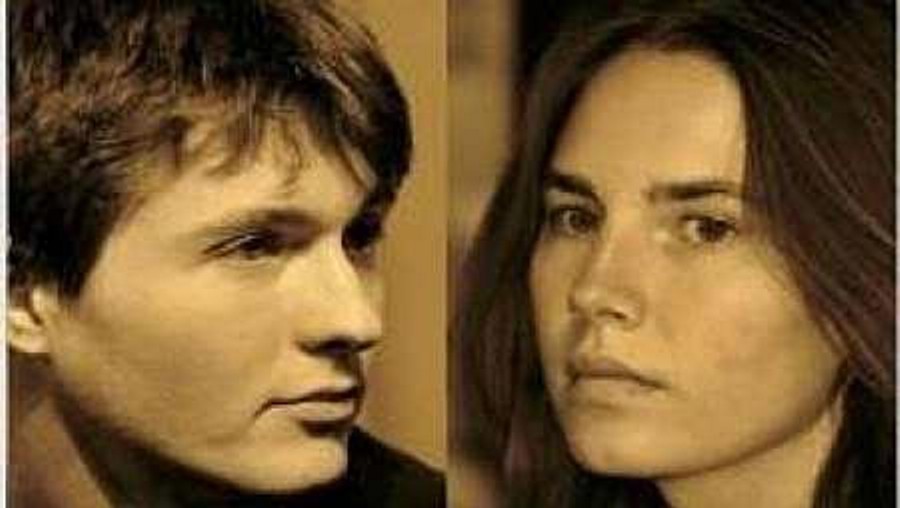
This Daily Beast report indicates that the cancelled jailhouse TV interview with Amanda Knox was a lot more firmed-up than Knox’s stepfather, Chris Mellas, seems to have claimed.
And it outlines the first phase of Knox’s Calunnia #2 trial which is based on charges brought by the interrogating police, all of whom testified at her trial that she was treated well during her interrogations as a witness and suspect. .
Click the image or link above above for the fine reporter Barbie Nadeau’s full article on some issues Knox has never been able to account for, including Knox’s callous skipping of Meredith’s memorial service.
The ten questions are all very tough, and each would also have been asked by the jury. Here they are:
.:
It’s back to court for Amanda Knox, the 22-year-old Seattle native currently serving 26 years in prison in Italy for sexually assaulting and murdering her British roommate, Meredith Kercher.
This week, Knox is expected to attend a preliminary hearing on slander charges lodged against her for accusing Perugia police of abuse. During her testimony at her murder trial last June, she accused the cops of slapping her on the back of the head during an interrogation just days after Kercher’s body was discovered in November 2007.
The police deny hitting her, and Knox’s own lawyers have never filed charges for the alleged abuse. If she is convicted of slander, a judge could add six years to her sentence….
Knox’s resurgence in the headlines was to coincide with a joint jailhouse interview she had granted to ABC News and the Italian broadcaster Mediaset’s Matrix program. But the bureau of prisons denied the interview in the final hour, effectively silencing Knox indefinitely.
A high-profile jailhouse interview with Knox is considered the Holy Grail by journalists covering the case, and the American and Italian networks have been vying for a chance to ask Knox a few questions on camera. Now it is unlikely anyone will get an interview before Knox’s appeal hearings this fall.
But if we did, there are a few questions we’d want her to put to rest.
1. Why did you and Raffaele Sollecito turn off your cell phones at the same time the night of November 1, 2007 and on again at the same time the next morning? You told the police that you and Raffaele slept late the morning of November 2, 2007, but phone records show that you both turned your phones back on very early that morning. How could that be?
2. Why were you bleeding? Your lawyers agree with the prosecution’s findings that at least one of the spots of Meredith’s blood found in the house where she was killed had your blood mixed with it. Your mother told me that you had your period. Your stepfather told others that your ear piercings were infected. Which was it?
3. Once you realized your mistake in blaming Patrick Lumumba for Meredith’s murder, why didn’t you tell the authorities? You told your mother that you felt bad about it, so why didn’t you alert an official so Patrick could be set free?
4. Why did you go with Raffaele to the police station on November 5? You were not called in for questioning. Did you realize at that time that you were both under suspicion?
5. Why weren’t your and Raffaele’s fingerprints found in your house after the murder if the two of you had spent time there that morning and the day before? Only one half-print on a glass in the kitchen has been attributed to you, yet you have claimed that you took a shower there that morning. How did you spend so much time there and leave virtually no trace?
6. Why did you take the mop and bucket from your house over to Raffaele’s house? You told the prosecutor during your testimony in June 2009 that you took the mop and bucket to his house to clean up a leak under his kitchen sink. But by your own testimony, the leak was miniscule and could have been easily cleaned up without it. What were you really doing with the mop?
7. What would you do differently if you had a chance to rewind the clock back to November 3, 2007? Would you go to the memorial service for Meredith? Would you still have gone to the police station with Raffaele? Would you have left for Germany when your aunt asked you to?
8. What do you think happened the night Meredith was killed? You have professed your innocence. Who do you think killed her and under what circumstances?
9. What do you really think of the Italian justice system? You told an Italian parliamentarian that you got a fair trial, and you even thanked the prosecutors for trying to solve the mystery of Meredith’s death, but your supporters at home in Seattle maintain that the Italian system is corrupt and unfair. What is your real view?
10. Is there anything you wish you would have said in court during your trial? You talked about your vibrator and about how you did not want an assassin’s mask forced on you. But in your final appeal after the closing arguments on December 4, 2010, why didn’t you say the words, “I did not kill Meredith Kercher?” Raffaele did when it was his turn to speak. Why didn’t you?
Our posting soon of the judges’ sentencing report will open up dozens of new questions for Knox. Such as: “How did you track Meredith’s blood into your own room and leave three traces revealed by luminol?”
Tuesday, May 18, 2010
How Each of The Three Subtly But Surely Pushed The Other Two Closer to The Fire (Part 4 of 4)
Posted by Cesare Beccaria
My previous report appeared here. In January 2009 the trial of Knox and Sollecito sees its first session. In February 2009 the prosecutor calls Rudy Guede to testify in the trial of his presumed accomplices.
A year earlier, Guede had said, on several occasions, that he wanted to have a face-to-face confrontation with Sollecito. This time, on the contrary, he says that he will be “mute” until his appeal, although he could “say some heavy stuff regarding the two defendants, but first I have to defend myself.”
All the attorneys conveniently keep their client off the stand, except for Amanda, who does a fairly decent job. Guede is not put on the stand and no confrontation was allowed by his lawyers. Sollecito is conveniently kept on the sidelines throughout the trial except for a couple of interventions. All their words were filtered by their lawyers.
On 4 April 2009 Guede is again called to testify at the trial in Corte D’Assise, andt he exercises his right to silence. From February to December 2009 the three attorneys play their game in Court, both in the Guede appeal and in the Knox-Sollecito trial in the Corte D’Assise.
Everything they said is documented in the trial transcripts and their reciprocal accusations went on and off until the last days in the Corte D’Assise.
As we have already seen for Rudy’s trial, during the closing statements the explicit accusations re-emerges with great strength (“the only guilty person is Guede, while Raffaele must be acquitted”, says Mrs. Buongiorno) and then the ceasefire kicks right back in again, right after the trial.
In mid-December 2009 a fourth Porta a Porta program discusses the murder of Perugia.
The previous week Amanda Knox and Raffaele Solecito have been found guilty of the murder, and now Guede is waiting for his verdict on appeal.
On this program the attorneys continue with their veiled reciprocal accusations, but without being direct and too explicit. More than a ceasefire, it’s an armed truce.
Amanda Knox’s attorneys were not present on the program, but Amanda was represented by Mrs. Sabina Castelfranco, the correspondent for CBS. This time she timidly tries to venture into the usual American media propaganda and lies regarding this case, but she’s regularly contradicted, and on certain occasions even ridiculed.
Sollecito’s father is present in the studio. His father talks about the innocence of his son, and only of his son, without mentioning anything in defense of Amanda. “My son was not at that house…. Curatolo could not have seen my son because he was at his house”. He says that if Raffaele was present at the crime scene he would have helped Meredith, and so on.
The host Bruno Vespa asks Sollecito’s father why did Amanda accuse Patrick, an innocent man? Francesco Sollecito responds “You are giving me a hard task, that of being not only the defender of my son but also of Amanda Knox”.
Giuseppe Castellini, director of the Perugia newspaper Giornale dell’Umbria, says that this trial has a logic, and such logic emerged from the various judges in 2008 up to Judge Micheli (GUP) that charged them with the crime.
The judges had said that more than one person committed the crime.
“Clear elements prove than more people were involved”. There’s physical evidence at the crime scene of more than one person. Two witnesses heard the screaming and more than one person leaving the house. The GUP had asked “Who are these people?” and Castellini concludes that “all clues and all circumstantial evidence lead to only two people and to no one else”.
“This is the weird thing”, says Castellini. “Everything leads to Amanda and Raffaele. There is not a third person…. Defense then rightly tries to dismantle such pieces of evidence one by one, but this is in essence the story of this trial”.
The host Bruno Vespa asks Guede’s lawyer Biscotti “You claim that the killers are Amanda and Raffaele?” Biscotti responds: “No, actually it is the Court that has decided on first instance that Amanda and Raffaele are the killers”.
The discussion rotates around Rudy’s role and statements.
We know that Rudy Guede never took the stand at either trials and only gave a spontaneous declaration that doesn’t require any questioning on the part of the prosecutor. In court, Rudy said: “I heard the voice of both Meredith and Amanda and they were arguing over what Meredith had already told me: the money that Meredith was missing”.
Rudy says he heard Meredith saying to Amanda “We need to talk”, and Amanda responding: “What’s happening?” In his declarations in Court Guede does not mention Raffaele (as he had previously done out of trial) but merely states that he was assaulted by a young man, in a time span of few seconds, and couldn’t recognize him. (Note that in previous statements he had said that the struggle lasted few minutes and that the assailant was Raffaele).
Vincenzo Mastronardi, a criminologist hired by Guede’s defense, repeats what Rudy told him: “I heard the bell. I heard it was Amanda. I heard Meredith say “˜we need to talk’”. Bruno Vespa asks him: “Did he only hear Amanda?”, and he responds “Yes, he only heard Amanda”.
Then Mastronardi explains his discussion with Guede. He asks him “Did he have glasses? He responded “˜no’. Did he look like Raffaele Sollecito? He responded “˜I don’t know, he might look like him but I am not certain’. “˜All I am certain of, is that the voice was of Amanda’ “.
This is interesting: why does Guede confirm that Amanda was in the house, but does not confirm - in December 2009, just a few days before his verdict on appeal - that Raffaele was also in the house?
Why has he been accusing Raffaele since March 2008 and now, just before his verdict on appeal, he says (or rather, his consultants say) that he’s certain about Amanda but not of Raffaele?
Do Guede’s attorneys fear a wrong move by Sollecito’s attorneys, while being confident about Amanda’s attorneys?
At this point the host Bruno Vespa starts a heated argument with the criminologists, claiming that it is not possible that Guede could have not recognized the assailant. “Come on, you’re a criminologist” says Vespa, “you know that anyone could easily recognize the face of the person that is wielding a knife in front of you…. You have to agree that this is an element of objective fragility” he adds.
Paolo Crepet, a psychiatrist, notes that originally Rudy’s version was kind of different. “Rudy talked to his assailant. He was threatened”.
Rudy’s attorney intervenes “No, you remember wrong”. Bruno Vespa also intervenes and says to Biscotti “Wait, you must admit that there is plenty of incongruence. They didn’t give Guede 30 years for nothing”. Biscotti responds “They sentenced Guede just like they sentenced the other two”.
On the timing of the murder, Bruno Vespa asks if it is true that Guede talked about 9:00-9:30PM.
Here the attorney of Guede gives an inaccurate response that was not picked up by anyone in the studio. He says that Rudy said that the murder happened at a later time. “He didn’t have a watch, therefore he didn’t know the exact time [of the murder], but it was certainly very late”, says Biscotti.
This is incorrect. Guede has said, at the beginning and on a couple of occasions after, that he entered the house with Meredith at 21:00 and that he heard the screaming at 21:20-21:30. So why is his attorney now saying that Guede testified that the murder happened much later? Why did no-one in the studio intervene to contest his statement?
On the forensic tests, Bruno Vespa says that “Non-repetitive testing must be done, by law, with the presence of all parties, otherwise they are not valid”.
The lawyer for Meredith and her family, Maresca, responds “All tests are not disputable, since all attorneys and their consultants were notified on the time and date of these non-repetitive tests”.
And in fact no one from the defenses showed up. By law, if they are notified and don’t appear for the testing, the results are perfectly valid. Defense attorneys chose not to be present, although notified and invited, because that was seemingly part of their defense strategy.
Regardless of the outcome of those non-repetitive tests, it would have been strategically preferable to avoid being present, because if the results were favorable to their client, that would be fine. And if the tests went against their clients, they could always claimed contamination at a later time.
On 4 March 2010 Rudy Guede, following the public release of the Motivazione against Knox and Sollecito, said: “chi sa’ parli” (“those who know must speak”).
On 6 March 2010 Rudy Guede writes a letter to Mediaset following the appearance on the scene of Mario Alessi, a child murderer serving a life sentence, who was claiming Guede divulged that he was alone at the house with another accomplice. Guede ends his letter by saying that the “horrible assassination” of Meredith was done by Amanda and Raffaele.
The court reached their decisions based on testimony and evidence from the night presented at trial. Everything else, including diaries, phone calls from Germany, cartwheels and media gossips, was totally irrelevant to the judges.
Formally, Guede’s accusations of the two accomplices must be dated from March 2008, but we know very well that the reciprocal accusations started on November 2007 and they went on for the entire two trials.
Except for Amanda, the attorneys have strategically avoided their clients from taking the stand and responding to questions, confrontations and cross-examination. Raffaele never spoke one word, except for spontaneous declarations. Guede was kept silent throughout the two trials, despite various promises of “speaking out”.
The prosecutor asked to have Guede on the stand for questioning, but he always exercised his right to silence and, as the Massei Report states on page 389 “The defense of Knox and Sollecito did not give their consent to admitting Guede’s declarations”. This is very indicative of the trial strategy adopted: avoiding their clients to pronouncing one bad word and avoiding putting them face to face with each other.
Now for some conclusions.
There is a lot of “I don’t remember” in this horror story. Rudy doesn’t remember the face of the aggressor, but then slowly, but progressively, his mind begins to function and, at appropriate moments, he remembers his name and that of his friend by the door.
Amanda doesn’t remember if she went to Via della Pergola with Lumumba, nor if Raffaele was with her. She doesn’t remember what she did at Raffaele’s house for the entire evening and night, but then she meets a nun in jail that restores her memory.
Raffaele also has a hard time remembering what happened in those few hours. He doesn’t remember if he was home alone or if Amanda was with him. Then he changes his statement but still doesn’t remember if Amanda left and, if she did, at what time she returned.
Can cannabis give such effects in exactly the time frame in which a young woman is being brutally murdered? Why did only three people out of 84 interviewed have this incredible amnesia?
As the journalist of Corriere della Sera, Fiorenza Sarzanini, said: “the arrests happened when they were saying things like “˜I was there with Patrick but can’t remember if Raffaele was also there’.
And Raffaele saying things like “˜I was at my house all night, but I don’t remember if Amanda was with me the entire time’”.
All three have lied several times, lost their memory but then slowly regained it, and changed their stories in order to fit new information as it became progressively known.
But most importantly they all have accused each other from the very beginning.
Not only the appellate judges of Rudy Guede’s trial but even Judge Micheli in Guede’s trial of first instance said that “The defendants, more or less explicitly, have intended to defend themselves by accusing each others.”
And that Rudy Guede “was there and he knows very well what happened”
“We might think that he remains firm on his unsustainable positions in order to cover up for someone, but on the contrary” says Judge Micheli, “it was from the very beginning that he chose not to involve others, and then he changed his attitude when he understood that other people were abandoning him to his own destiny”.
It should also be considered that the defense of Amanda Knox and of Raffaele Sollecito have called to trial only those witnesses that would testify against Rudy Guede and have requested only that police carry out more investigations on Guede.
Also, the Massei Report states that the defenses of Knox and Sollecito have at the end of it all “explicitly indicated Rudy Guede as the sole perpetrator of the criminal acts against Meredith Kercher”.
Rudy’s original story of the events was so ridiculous that no one could have possibly believed him. And no one did.
Despite this, he avoided naming his presumed accomplices directly, but chose instead, from the very beginning, to imply their involvement through his writings and his threats, while waiting for the appropriate time to formally accuse them of the murder.
“Guede kept quiet for as long as he could” said the Court of Appeal “because, given the deep connection of the events, accusing Amanda and Raffaele would have exposed him to their very probable retaliation”.
The court said all three should have explained what had happened in that house on the night of the murder, “at least for a sense of human compassion toward the poor victim”.
Instead, they “preferred to cram their statements (made on several occasions) with lies, reticence, half-truth, allusions, improbable occurrences and by more or less veiled reciprocal accusations”.
This is my final report. Ciao from Rome, and thanks.
Sunday, May 16, 2010
How Each of The Three Subtly But Surely Pushed The Other Two Closer to The Fire (Part 3 of 4)
Posted by Cesare Beccaria
My previous report on this appeared here.
During the first two months of 2008, the attorneys of Amanda Knox and Raffaele Sollecito begin to elaborate their theory of the sole killer that entered the house through the window, and then raped and killed Meredith.
It is interesting that these attorneys at first didn’t mention the name of Rudy Guede though the accusation was more or less explicit.
During his chat conversations from Germany Guede had already mentioned Raffaele’s involvement. When Giacomo asked him if that was Raffaele he had replied several times “I think so”. But as the two previous posts below show, thereafter he began to pull back.
By the time of his three-hour interrogation with the prosecutor on 26 March 2008 Rudy Guede apparently has had enough, and he is done with pulling back any longer. He now formally accuses Knox and Sollecito (“I saw Amanda and Raffaele that night”).
He now shows no doubts about identifying Raffaele Sollecito as the aggressor (“that guy with the knife was Raffaele”).
When asked by the interrogators why he responded “no” to the question of Giacomo as to whether Amanda “did it”, Guede states first that he was mainly concentrated on the male figure with the knife, and second his response to Giacomo’s questions was given in a hurry.
But Rudy did mention Amanda’s name in those previous conversations from Germany, indirectly implying her involvement. Amanda Knox was also mentioned extensively in his diary written at the end of November 2007, and he described her there in harsh words.
During his interrogation by the prosecutor, Guede now adds that he heard Amanda’s voice by the door, and then he saw her silhouette from Filomena’s window (“As Raffaele walked out I heard someone waiting for him outside. Now I can say that it was Amanda Knox”).
Judge Micheli in his January 2009 sentencing report for the Guede trial points out that Guede constantly “adjusted the content of his statements to the parallel and progressive evolution of the investigations”. He conveniently adjusted the time of the murder and other claimed facts as the investigation proceeded.
Guede originally indicated the time of Meredith’s murder as having been around 9:20-9:30PM. This is what he told Giacomo during the Skype conversation. His attorneys would later push the time to 11:30PM, denying that Guede had ever talked about 9:30 and couldn’t have known the time anyway as he hadn’t had a watch on him.
The Micheli Report states that Guede’s accusation of Amanda and Raffaele formally happened during the interrogation of 26 March 2008. The conversations from Germany were not admitted by the court, and nor was his diary. Only Giacomo’s testimony was considered.
Judge Micheli in his sentencing report considers none of Guede’s declarations as credible.
On December 7in his first interrogation on his arrival back in Italy, Rudy never made references to Amanda. He said that he looked out the window but didn’t see or recognized anyone.
Judge Micheli therefore says that the interrogation of March 26, 2008 cannot be considered a completion of his previous declaration (as his lawyers were asserting), but rather a “radical change of course”.
Why didn’t Guede accuse Amanda and Raffaele during, or right after, the interrogation of December 7?
After all, he had a great opportunity to claim to recognize a person that was arrested and accused of the murder whose name was well known to Rudy. And as Micheli states in the report, “Guede didn’t even have the natural qualms that a witness might have in cases of uncertainty, knowing that he might get an innocent person in trouble”.
So why did he reserve the right to indicate his alleged accomplices at a later time?
On 15 May 2008 Guede asks to make some new spontaneous declarations.
Among other claims, he claims to have seen Raffaele at the scene of the crime, and his new conviction about this derives from the fact that he had seen his pictures in the newspapers. He also confirms the presence of Amanda: “I heard various steps of people leaving. I went to the closest room, I looked outside and I saw the silhouette of Amanda”.
On 19 October 2008 the prosecutor at Guede’s trial in his closing statement observes that “at the beginning Amanda had intentionally covered up for Guede, sidetracking the investigators toward another black person. For his part, Rudy has tried to keep Amanda out while being more explicit in involving Raffaele”.
On 24 October 2008 Francesco Vinci, the forensic consultant for the Sollecito defense, hands over to the Court his analysis report for the DNA on Meredith’s bra hook (Evidence 165B).
He states that “the analysis clearly shows that there are profiles of three other individuals on the clasp”, adding that the genetic profiles of Amanda and Rudy are also on the clasp.
Although Vinci’s presumed intention is to try to remove from trial the evidence against his client (since too many DNA profiles are found on the clasp, making it hard to reach an “unequivocal interpretation”) in reality this intervention comes across like an attempt to involve Guede’ s other two unlucky friends.
Meo Ponte, correspondent of La Repubblica, puts it nicely: “One asks if this is an involuntary false step or if Sollecito’s defense has decided to return to their previous steps when, at the beginning of the investigations, they were looking at every possible way to separate the fate of Raffaele from that of Amanda, trying to reduce charges against Raffaele to those of a lesser crime”.
Interesting here is that four days before the verdict of the first instance against Rudy Guede (and the decision on the formal charging of Knox and Sollecito) all the attorneys for all three can be seen to be fighting a three-way war, trying to save their own clients at the expense of the others.
Mr Mignini couldn’t have asked for more. This tactic almost renders superfluous the presence and arguments of the prosecutor.
Knox’s and Sollecito’s attorneys are indirectly accusing Guede (without mentioning his name) by trying to prove the sole-killer theory. And Guede’s attorneys are definitely implicating Knox and Sollecito, and at the last day of trial explicitly accuse them of the murder.
On 28 October 2008 Rudy Guede receives a 30 years sentence, and Amanda Knox and Raffaele Sollecito are formally also charged for Meredith’s murder.
The day after on 29 October 2008 the top-rated national TV program Porta a Porta (in the second of the four shows so far) discusses the trial outcome of the previous day. All the lawyers are present except for those of Amanda Knox.
Whereas during the days before the trial all the attorneys were fighting for their own client, and accusing each other’s clients of murder, during this Porta a Porta program they look fairly friendly.
Mrs. Buongiorno (the lead lawyer for Raffaele Sollecito) says that she is not saying that it was Guede who killed Meredith, she is saying that “procedural elements” conclude that there is such responsibility. “All I want to say is that Raffaele was not in that house.”
Bruno Vespa, the host of the Porta a Porta program, asks Mr. Biscotti (Rudy Guede’s attorney) if his defense claims that Amanda and Raffaele are the two people identified by Guede on the night of the murder. Biscotti replies that Guede “heard two people”, but he doesn’t confirm that it was Raffaele and Amanda.
Why does Guede’s defense all of a sudden avoid mentioning the names of those whom until the previous day they had accused of the murder?
The magistrate on the show, Simonetta Matone, intervenes and she says: “As part of your defense strategy I remember that you have said that Amanda and Raffaele are the two people responsible for this homicide”.
The attorneys of Guede responded: “well, this is a trial dialectic (dialettica processuale)”. The magistrate then asks them “what are you talking about, trial dialectic? You have claimed that Amanda and Sollecito committed the crime”.
Mr. Biscotti (Guede’s attorney) doesn’t respond, and Mrs. Buongiorno (Sollecito’s attorney) steps in and immediately changes the subject.
Further on in the program, Mr. Biscotti says that Rudy heard Amanda’s voice, but doesn’t say that Guede identified Raffaele.
The Porta a Porta host, Bruno Vespa, asks Biscotti how could it be that Rudy was not able to see the assailant? Biscotti explains that it was dark and the assault was quick.
Bruno Vespa continues to be incredulous and insists that it is impossible for him not to have recognized his attacker.
Why does Biscotti now hide the fact that Guede saw Sollecito, when up to just a few days before he was confirming his identity? In fact, why would both Guede’s attorneys and Sollecito’s attorneys avoid discussing the reciprocal accusations that had gone on for months until just a few days earlier?
Could it be that they are both now preparing for the next trial at the Corte d’Assise, both of them hoping for an acquittal that would be beneficial both to Raffaele and to Rudy?
Right after the first verdict the ceasefire is back in place, and everyone is back out of the gray area.
It’s also interesting that during the program Mrs. Buongiorno insists in defending only Raffaele. She contests the bra clasp but never says anything about the knife. Her only concern is Raffaele.
She says “My trial is as follows: you must prove that three people committed the crime, or you must prove the presence of Raffaele in the house”.
At a certain point in the Porta a Porta program, Alessandro Meluzzi, a well known psychiatrist hired by the Guede team, intervenes during a discussion and says: “”¦ but wasn’t there a footprint found of Raffaele?”.
Mr. Biscotti - Guede’s lawyer - blocks him immediately and says “no, no, no”. Mr Meluzzi looks around in despair and then realizes he has said something outside of the defense line and now keeps quiet instantly. Why was he stopped?
In the first session of the Knox-Sollecito trial in the Corte D’Assise of 16 January 2009 Luca Maori, Sollecito’s second attorney, begins by saying that “Raffaele’s life was destroyed on October 25, the day he met Amanda “¦ this changed his life because of the tragic consequences and at the end [meeting her] has destroyed him”.
In the opening statement Mr. Maori makes it clear and simple: “Justice is already done. Rudy Guede, the only person responsible for the murder, has received a 30 years sentence”.
Asked by journalists about his reaction to these accusations, Walter Biscotti responded as he had done on other occasions: “My client will speak at the appropriate time.”
On 19 January 2009 they are all back again, on the third Porta a Porta show, except (again) for Amanda Knox’s lawyers.
Guede had been sentenced in the first instance to 30 years. His lawyer Biscotti now adds a little more detail to Guede’s story. He explains that Rudy went to the bathroom and heard Amanda discussing with Meredith, put on his earphones and closed the door.
The TV host Bruno Vespa reminds Mr. Biscotti that the attorneys of Sollecito and Amanda have accused Guede, and have said that he was already convicted and therefore he must be the sole killer.
Mr. Biscotti doesn’t appear very happy: “In our opinion this has been a “cowardly procedural move (“vigliaccata processuale”).... They took advantage of the absence of Rudy in that hearing” of 16 January, he replies.
And then he adds that their strategy would not work since the GUP has denied their clients’ release on house arrest and has issued a definite ruling on the matter.
Guede’s attorney is practically saying here that, even though Rudy was convicted in the first instance, the other two are also charged and will also have to stand trial. “We will be vigilant and we’ll observe every breath of that trial”.
(It’s funny how Biscotti refers to his accusation of the other two a few months earlier as “dialettica processuale” (dialectical) but now calls Maori’s accusation of Guede a “vigliaccata processuale” (cowardly).)
The prosecutors have announced that they will call Rudy Guede to testify at the trial of his presumed accomplices, and the Porta a Porta host Bruno Vespa asks Biscotti if Rudy will finally tell the complete truth in front of the Court of Assise.
Biscotti responds that Rudy has already told the truth and that he will next talk further in front of the judges of appeal, implying that his client will not testify at Knox’s and Sollecito’s trial.
He says that since Judge Micheli didn’t find him credible, just like as he didn’t find the other two credible (they were not even called as witnesses at Rudy’s trial), Guede could exercise his right to silence at Knox’s and Sollecito’s trial.
Giuseppe Castellini, director of the Perugia-based newspaper Giornale dell’Umbria, weighs in at length on this Porta a Porta show about Guede’s changing of his versions.
In the second version, Guede says that as he entered the bathroom he heard the bell ring and heard Amanda’s voice. He then was reassured because he knew it was Amanda. Guede also said in his second version that from Filomena’s room he sees Amanda and another person that he couldn’t identify, running away.
In the third version, Rudy hears the voice of Amanda (“We need to talk. What is the matter?”) and he asks Mignini to have a confrontation with Sollecito.
Mr Biscotti, Guede’s attorney, disputes Mr Castellini’s claim that the description changed and he says that Guede never changed his version, but rather “integrated it with details” and that Guede asked for a confrontation with both Raffaele and Amanda.
Mr. Gentile, the other lawyer for Guede, adds that Guede was interrogated in Germany without attorneys present (implying that what he said back then cannot be considered as a first version).
The Porta a Porta host. Bruno Vespa. notes that every one of the three accused is claiming their innocence and at the same time each accusing the other of the murder.
He then asks Luca Maori, one of Sollecito’s attorneys, if the situation of Raffaele is linked to that of Amanda or if there could be a different scenario (“she was there and he wasn’t”).
Mr. Maori responds that “Raffaele is Raffaele and Amanda is Amanda, although this does not mean that their positions could not be linked…. Raffaele was at his house and probably even Amanda, so both were at his house during the night”.
He adds that Raffaele never changed his version.
The newspaper director Giuseppe Castellini reacts strongly to this claim by Mr Maori. He illustrates by reading Raffaele’s statements word by word that he did in fact change his version, three times.
On the first version, of November 5 (which is actually the second version if we exclude the statement in which he said he spoke “a lot of rubbish”) Raffaele said he went home alone, while Amanda went to meet her friends. He says he surfed the web all evening and Amanda returned at 1:00AM.
Days later, police hear from Jovana Popovic, who testified that she rang the bell at 8:40PM and Amanda answered the door, and therefore Amanda must have been home at that time.
Mr Castellini observes that now Raffaele changes his version again and notes how he had said “on November 5 I lied because I was under a lot of pressure”. Mr Castellini says that Raffaele had stated that Amanda was with him all that night, but now, in his latest version, he doesn’t remember if she went out that evening and for how long.
Bruno Vespa asks how can it be possible that a person cannot remember, after just a couple of days, if his girlfriend was with him or not, what time she left, and what time she returned?
“Everyone is able to remember where they were when the man landed on the moon. And that was forty years ago…. Raffaele should have been able to describe minute by minute what happened on that evening”.
The answer of Sollecito’s attorney Mr. Maori is as follow: “Someone must have killed poor Meredith. This someone is certainly not Raffaele Sollecito, because there are no evidences that put him inside the house of the murder. Everything else is details”.
It’s interesting to note that Mr. Maori hardly mentions Amanda Knox.
Even when asked if Amanda was with Raffaele he doesn’t give a straightforward answer, he just repeats that his client is not guilty. Throughout the two hours of the Porta a Porta program, he keeps saying that his client was not at the crime scene: “We will prove in court that he wasn’t there, and that he did not commit the crime.”
The CBS correspondent on the TV show, Mrs. Castelfranco, keeps trying to insert Amanda into the discussion (“Amanda wasn’t there either”) but Maori was not confirming this, he was not even listening.
The host Bruno Vespa tells Maori that there was more than one person reported by a witness as leaving the house and therefore “the killers must have been more than one”.
Mr. Maori’s answer is: “We are not alone in saying that the killer is only one. It’s the judge that has sentenced just one person”.
Guede’s attorney replies: “Oh, come on, Maori ! How can you say these things?.
A very important issue is now brought up by the host, Bruno Vespa.
Talking about Amanda, he says that it’s very strange that a person says “I was there” and then days later denies being there.
“Usually people say “˜I was not there, I know nothing, I have seen nothing’ and then eventually they admit that they were there”, says Vespa. “Instead Amanda [at first] says “˜I was there’ and the killer is Lumumba”.
No one in the Porta a Porta studio contests Mr Vespa’s claim that this is strange, including Maori and the CBS correspondent.
And the reason is very simple: while the U.S. media has justified Amanda’s behavior by claiming that she was forced to name Lumumba under brutal police pressure, the Italian media has never reported this because there is zero evidence that it ever happened.
The widely known and believed fact is that Amanda named Lumumba voluntarily, when the police asked her to verify her cell phone activities and was asked who that person was. This is a given and indisputable fact, confirmed by various witnesses.
Even Mrs. Castelfranco, the CBS correspondent, is very careful in not repeating the false claim of the U.S. media. She says instead that Knox was “young and confused”. The CBS correspondent adds that after all none of them remember well what happened that night.
The host Bruno Vespa interrupts her: “One thing is remembering single details. Another is remembering if she was there or not. Being at the house [of the crime] or sleeping at the house of the boyfriend, are two enormously different things…. It is very striking that her first instinct was that of saying “˜I was at the house of the crime’”.
The CBS correspondent remains silent.
At this point, Mr. Biscotti, Guede’s attorney, says that while Rudy admits to being in the house, the other two each deny their presence although there is evidence that unequivocally confirms both of their presences.
Mr Vespa asks Biscotti if their trial strategy is that of proving Rudy’s innocence, or if it would be convenient to them to also demonstrate the culpability of Amanda and Raffaele.
Guede’s lawyer Biscotti responds: “We don’t want to prove their guiltiness. But since there is no other individual whose evidence in the house is proved, we must make a logical inference”.
The host reminds Biscotti that they have explicitly accused Raffaele and Amanda during Guede’s trial. Biscotti responds: “Well, the logical inference tells us that Amanda and Sollecito are the guilty ones”.
Mr Vespa asks “Therefore the person that ran into Rudy (whom he did not fully identify) would be Sollecito?”.
And Biscotti responds “In our opinion, since we were not there and could not have seen it, by linking all the circumstances that emerged from the investigation of the prosecutor and those that emerged from the preliminary hearing, this leads to the conclusion that whoever killed Meredith could not have been other than the other two defendants”.
Francesco Maresca, the attorney for the Kercher family, makes it plain that in his view all three defendants are without any doubt responsible for Meredith’s murder.
My next report appears here.

